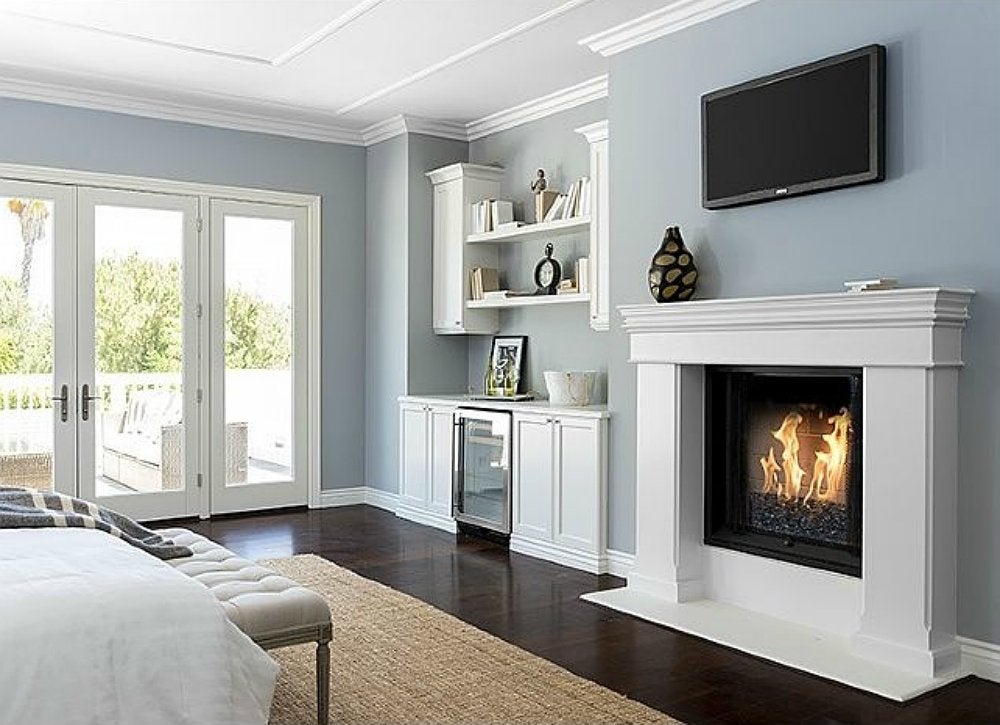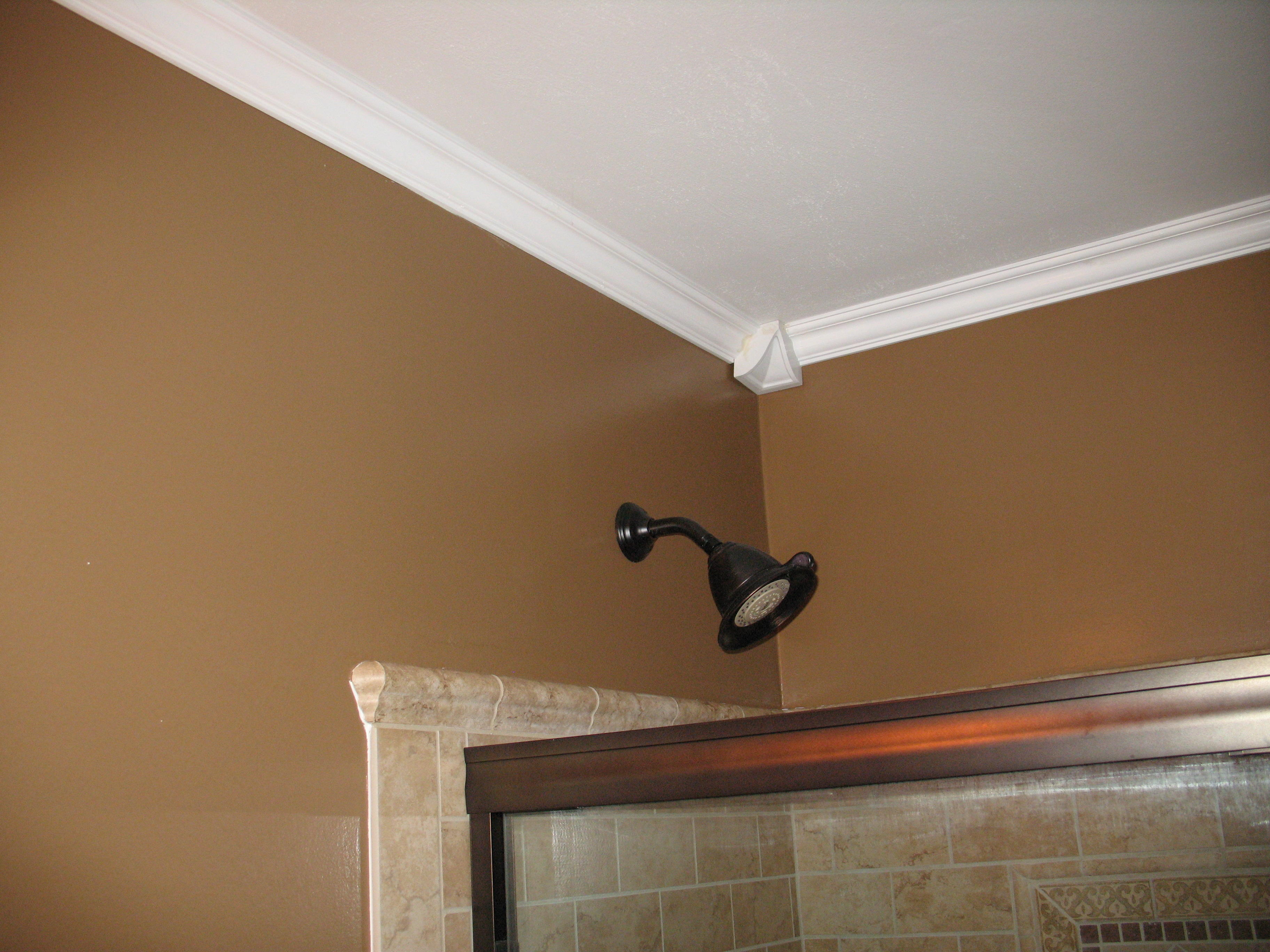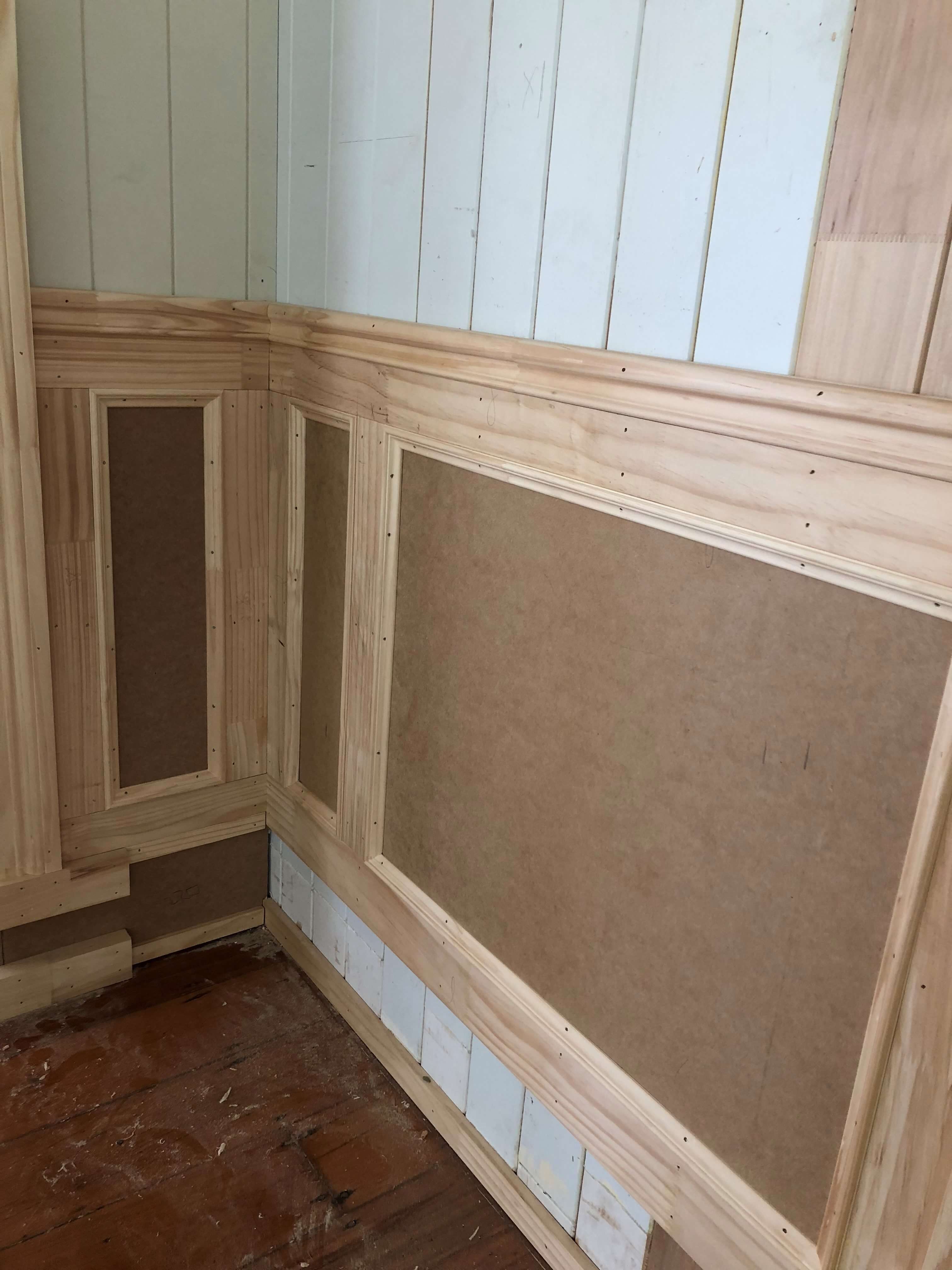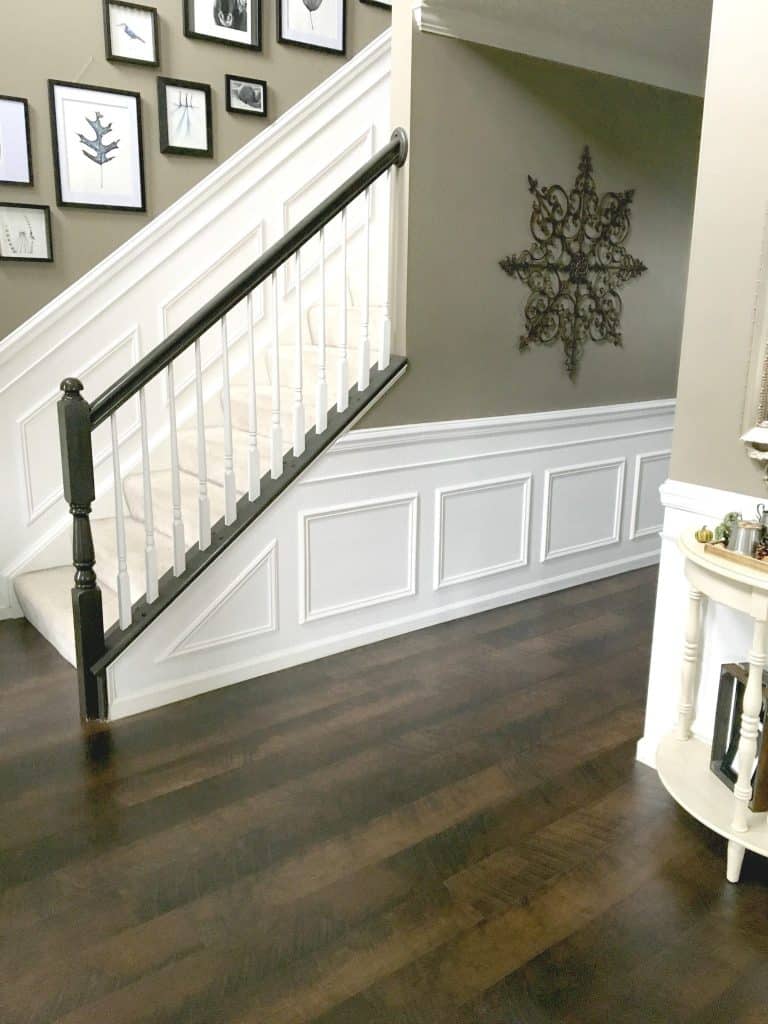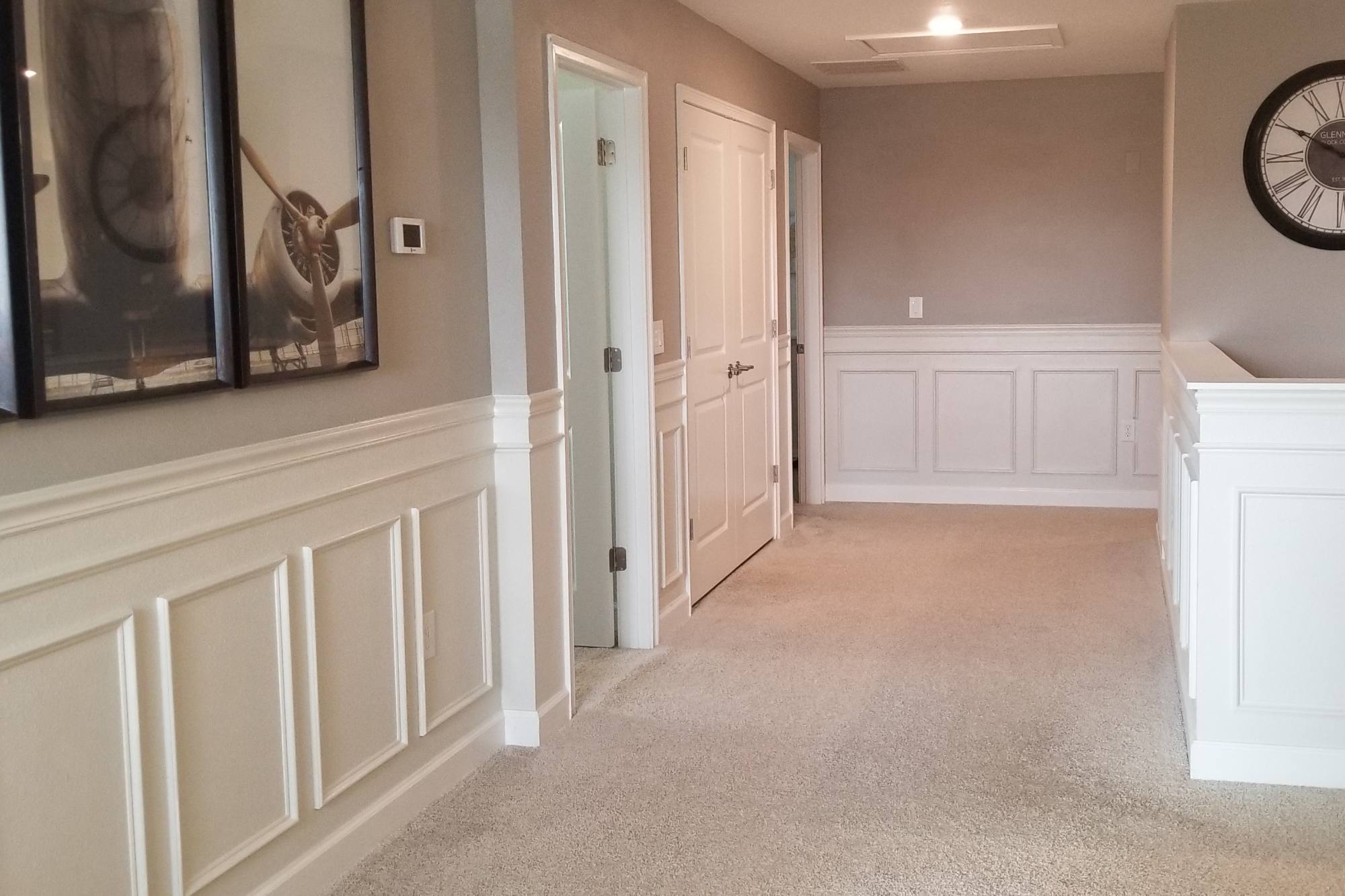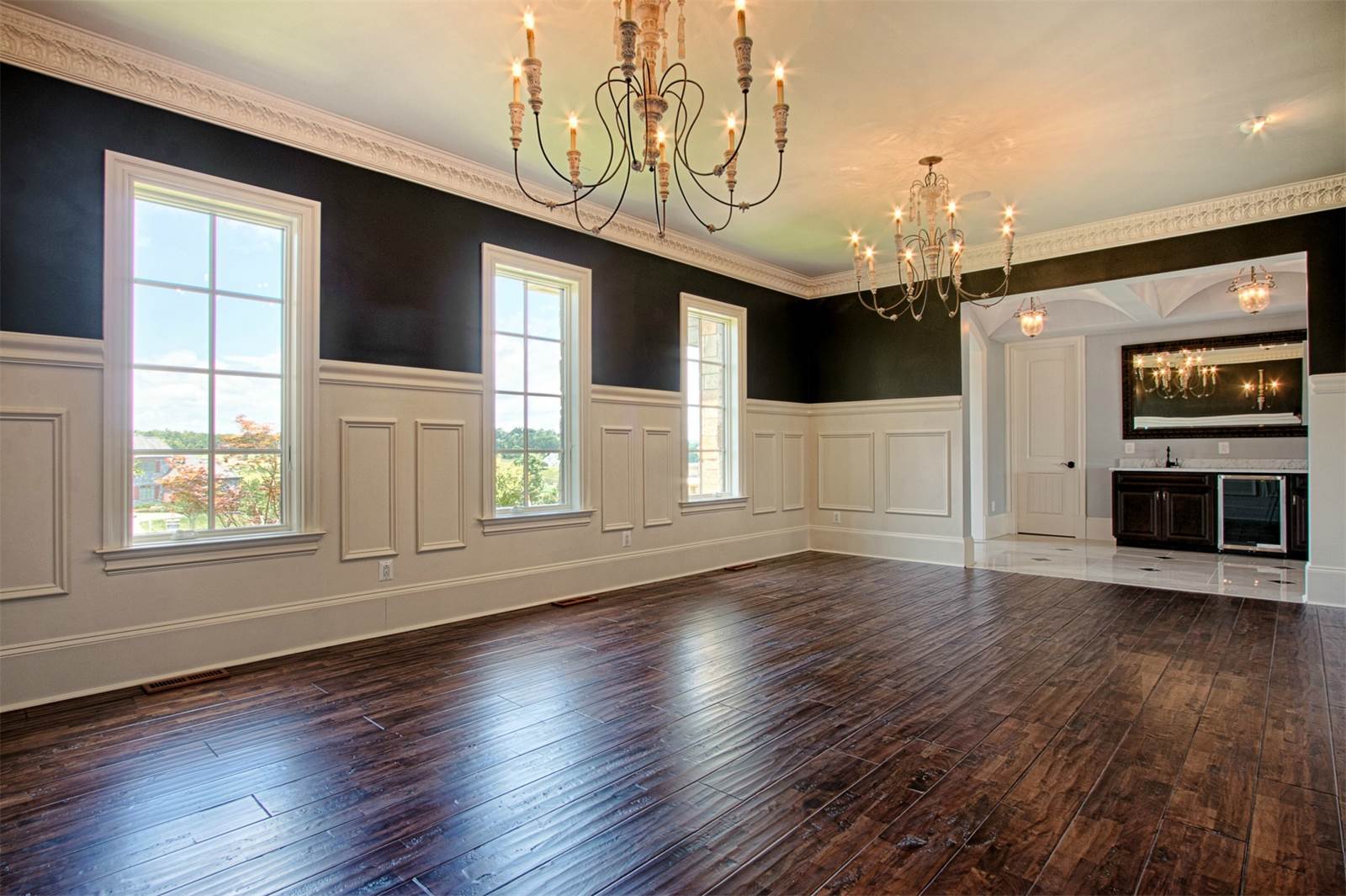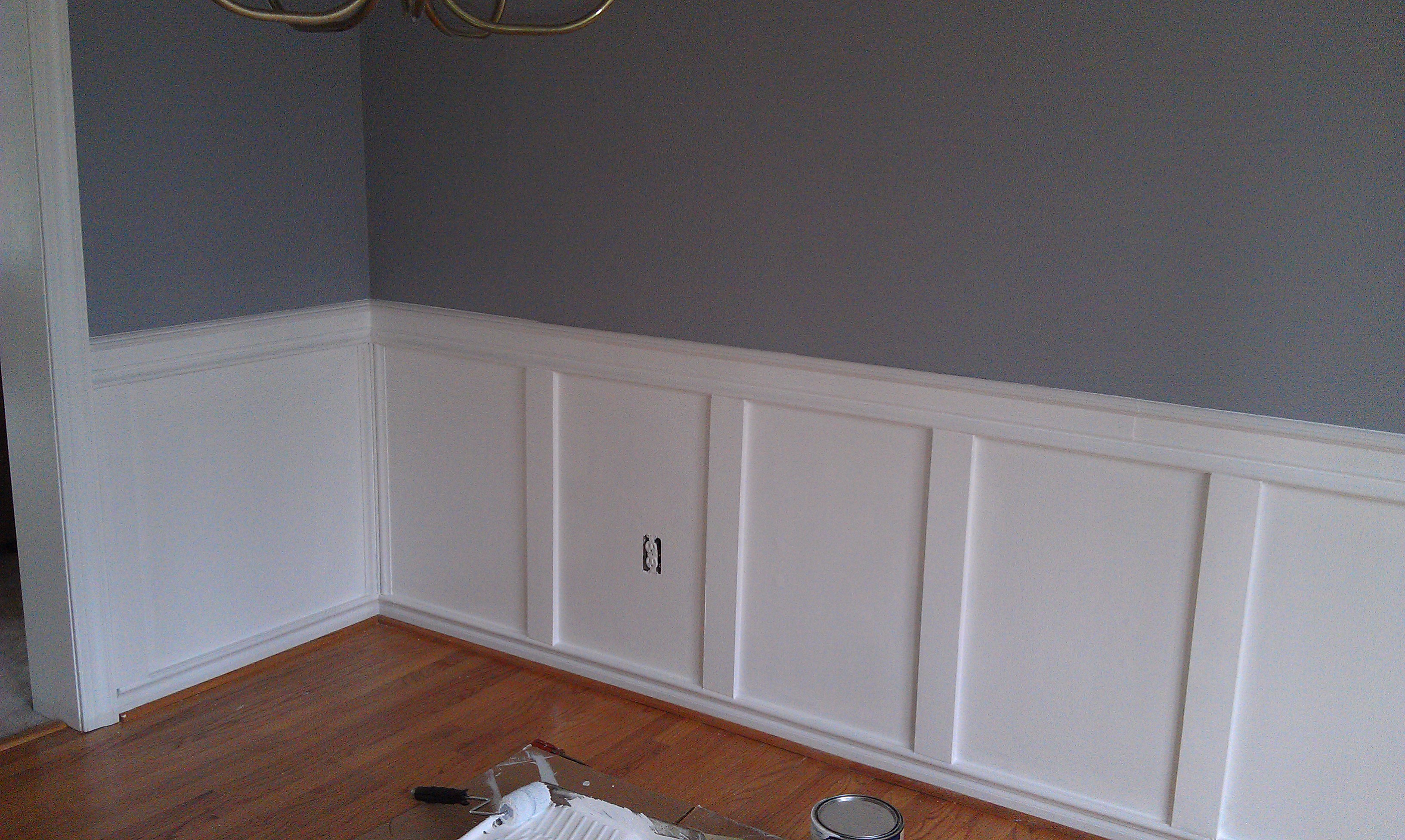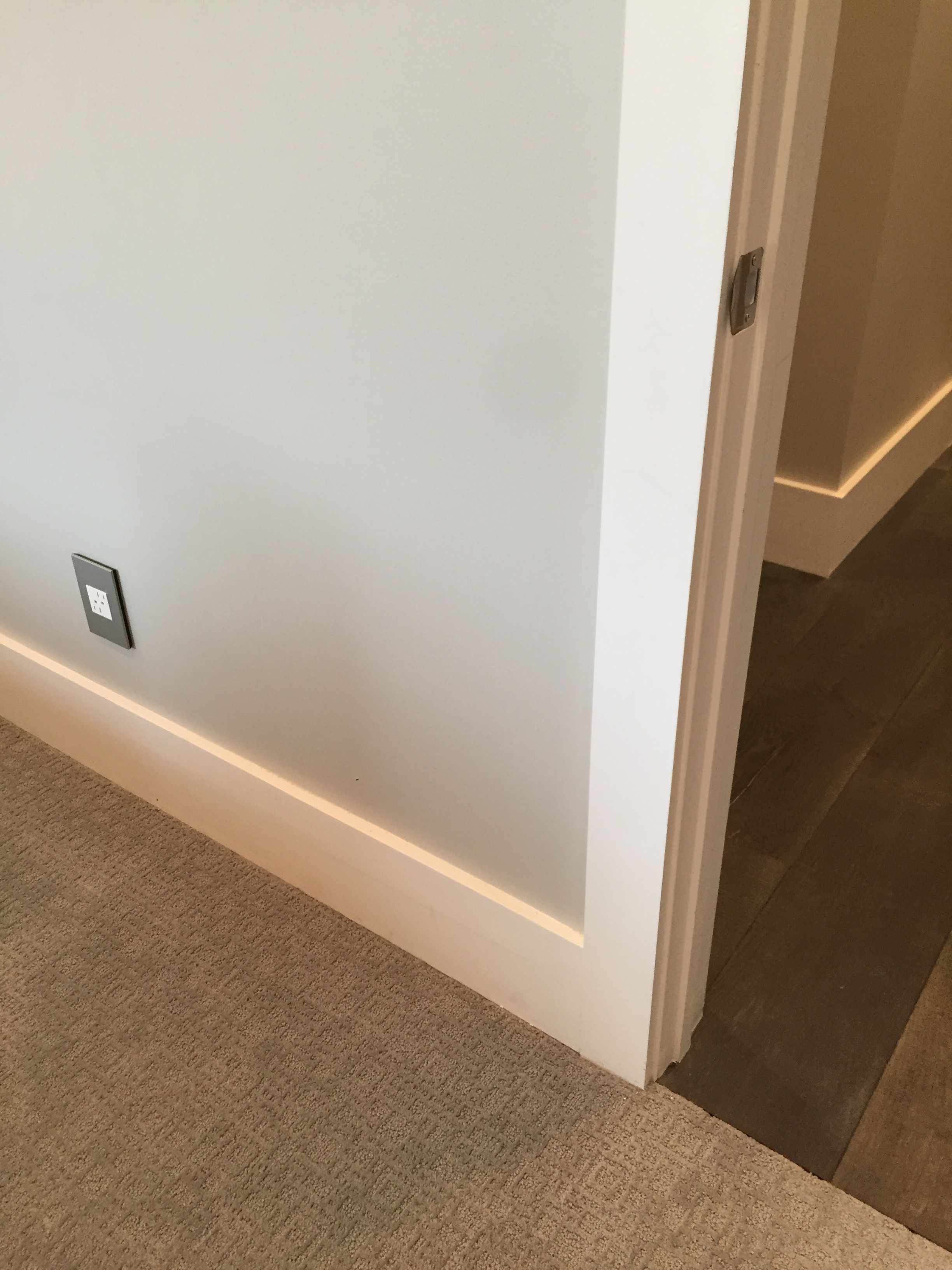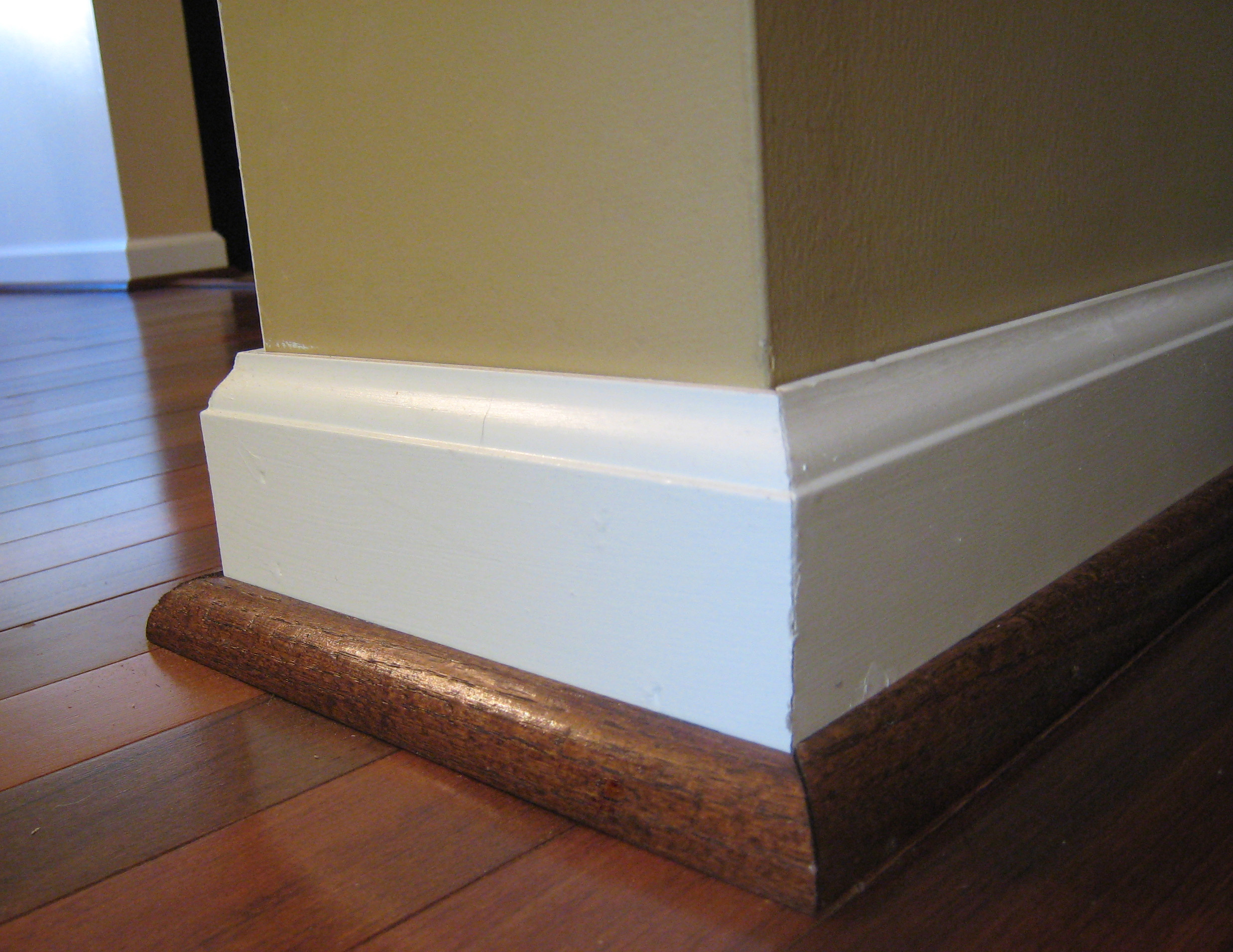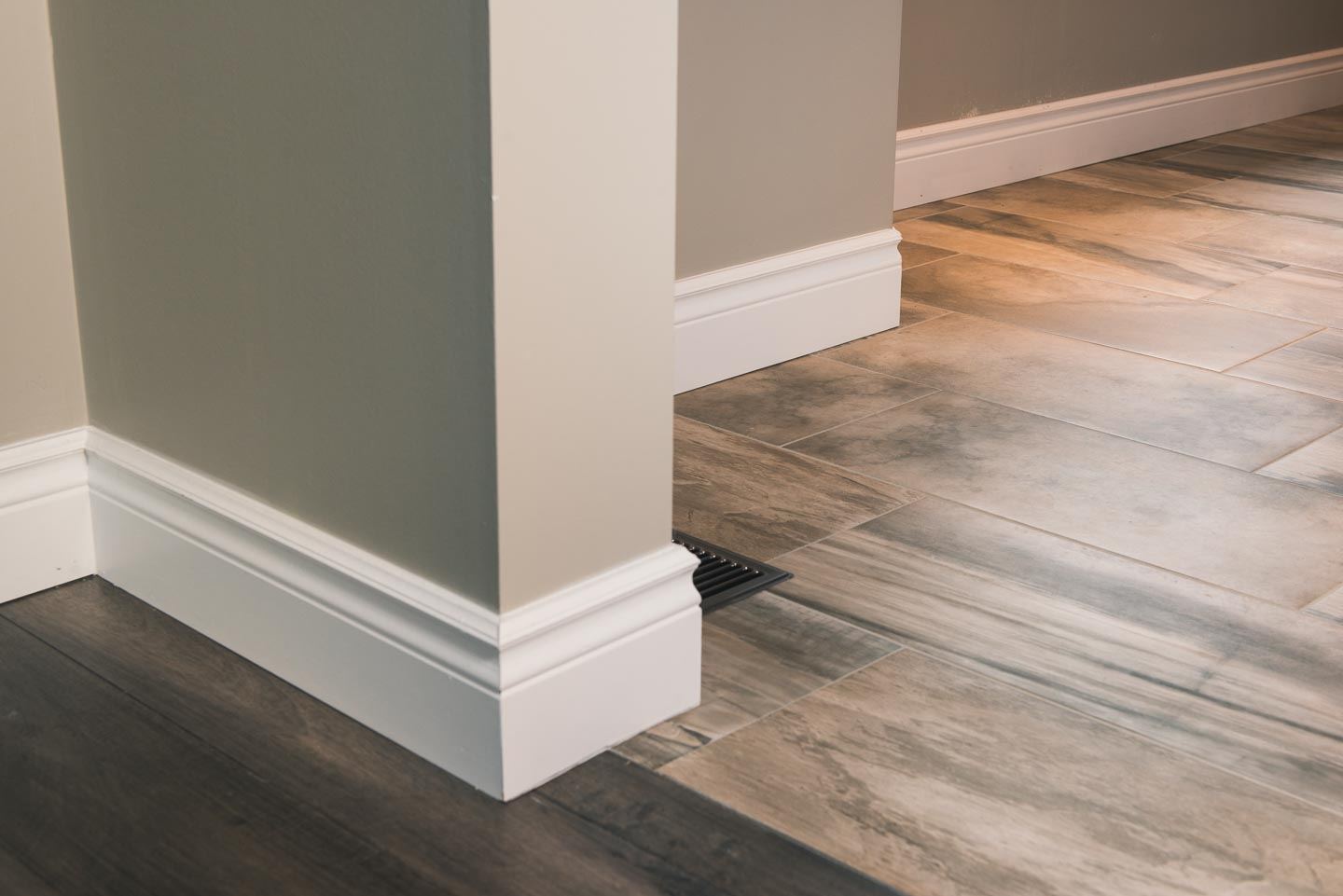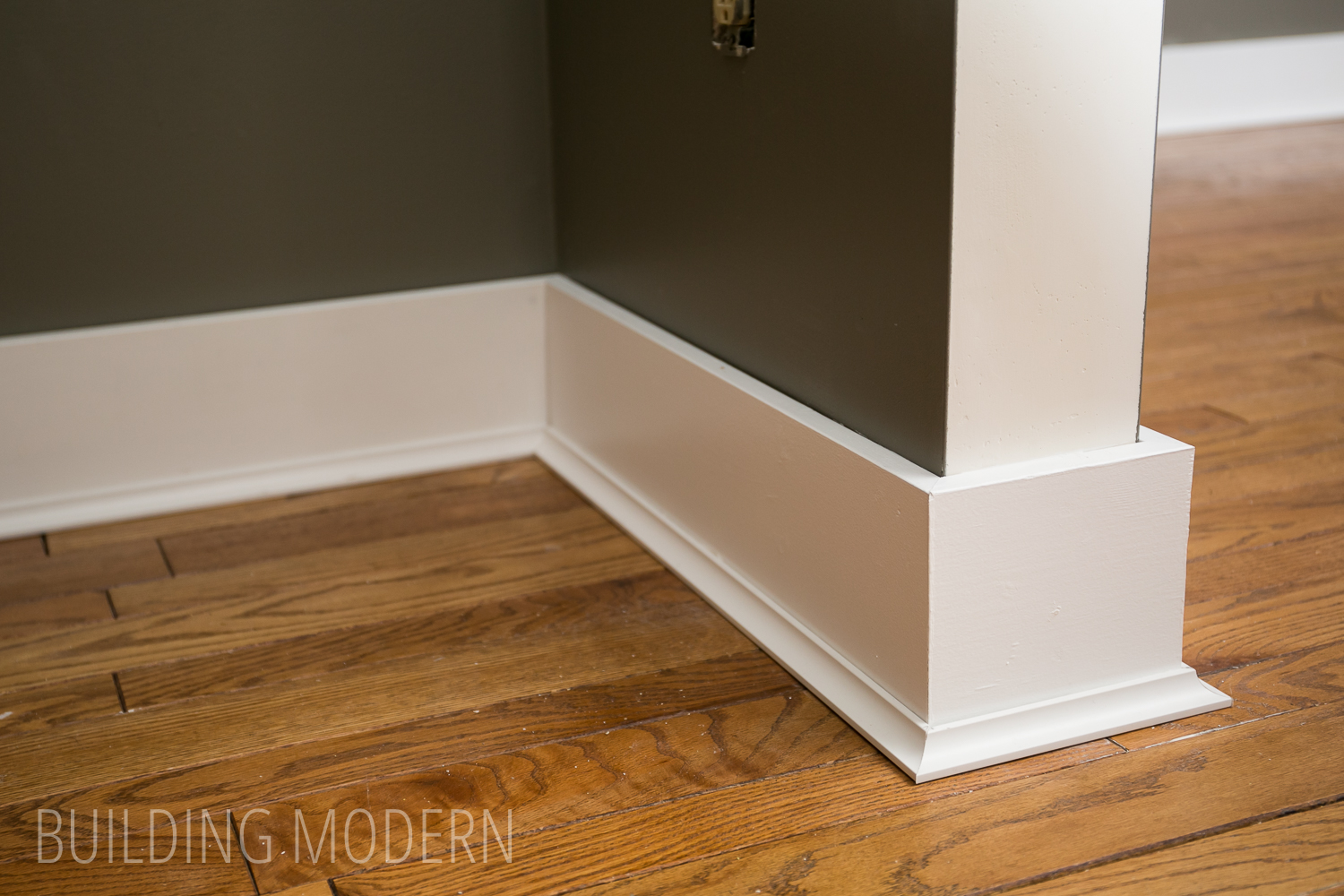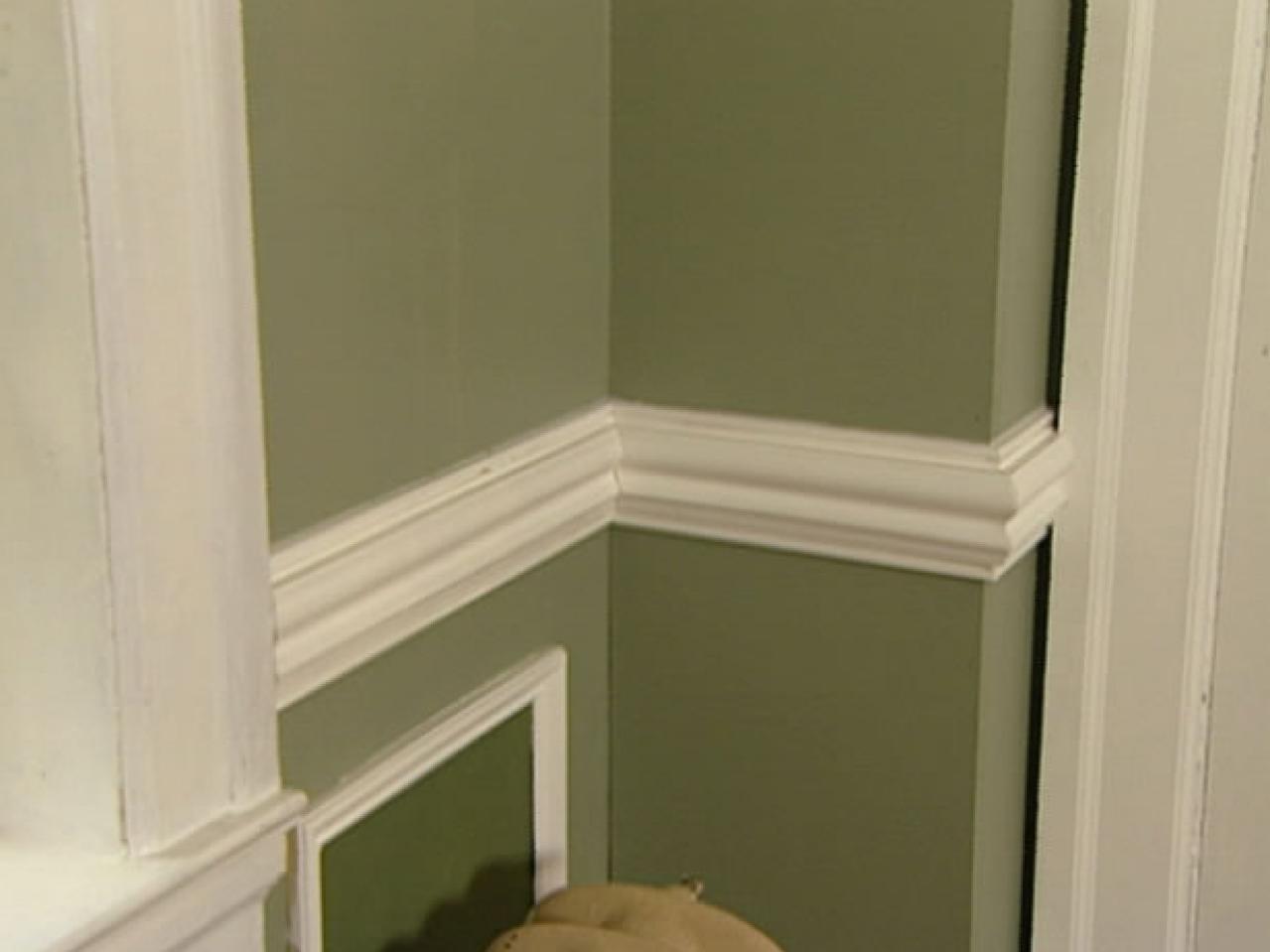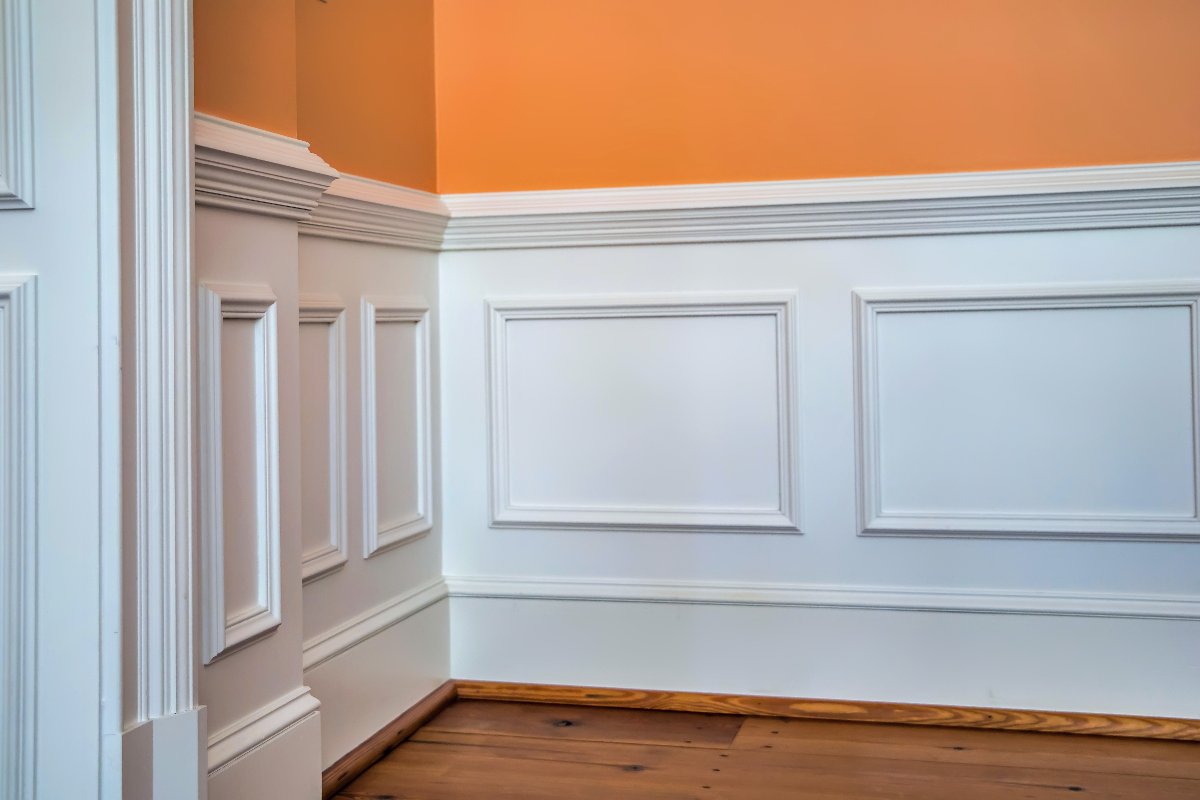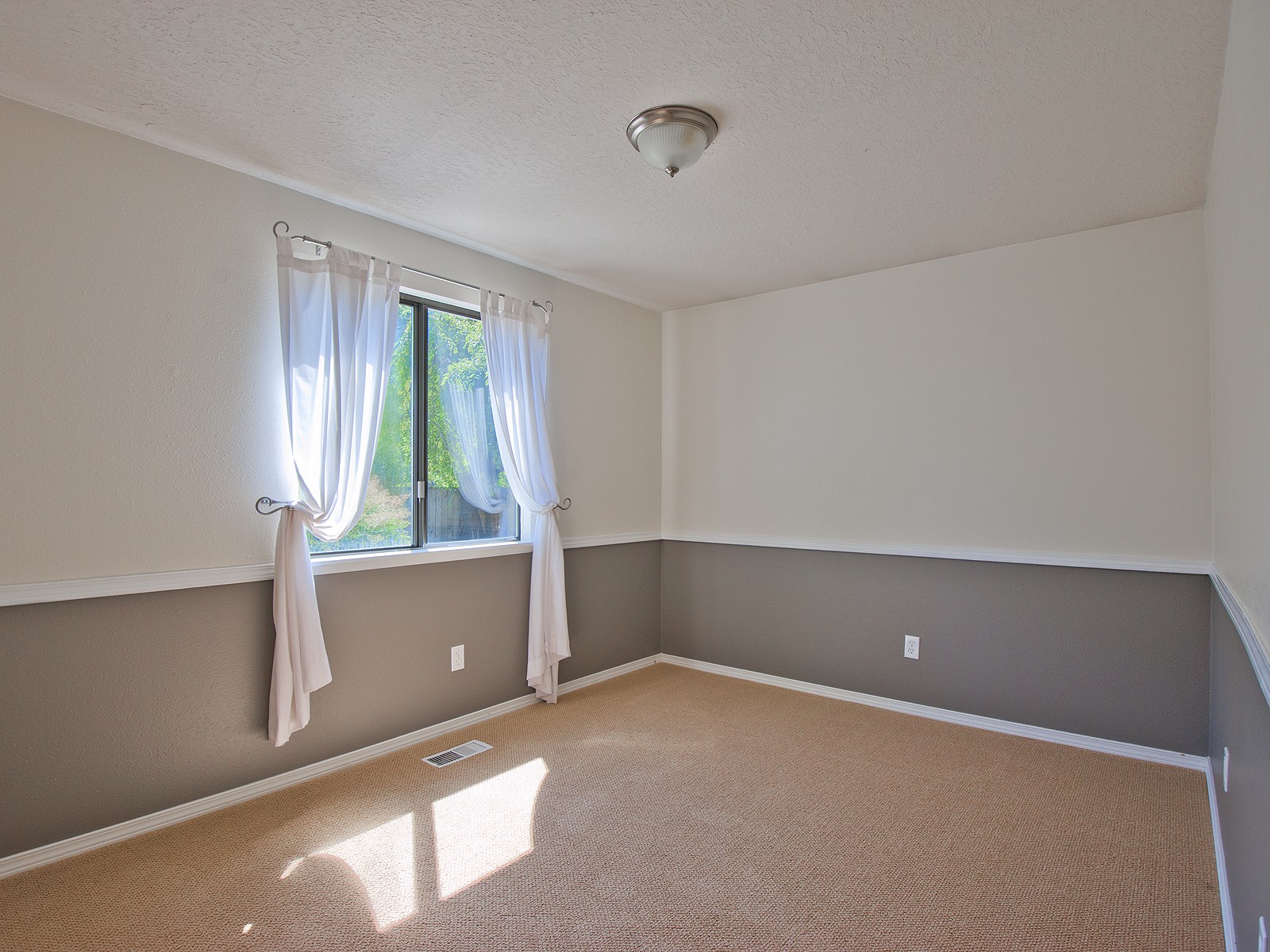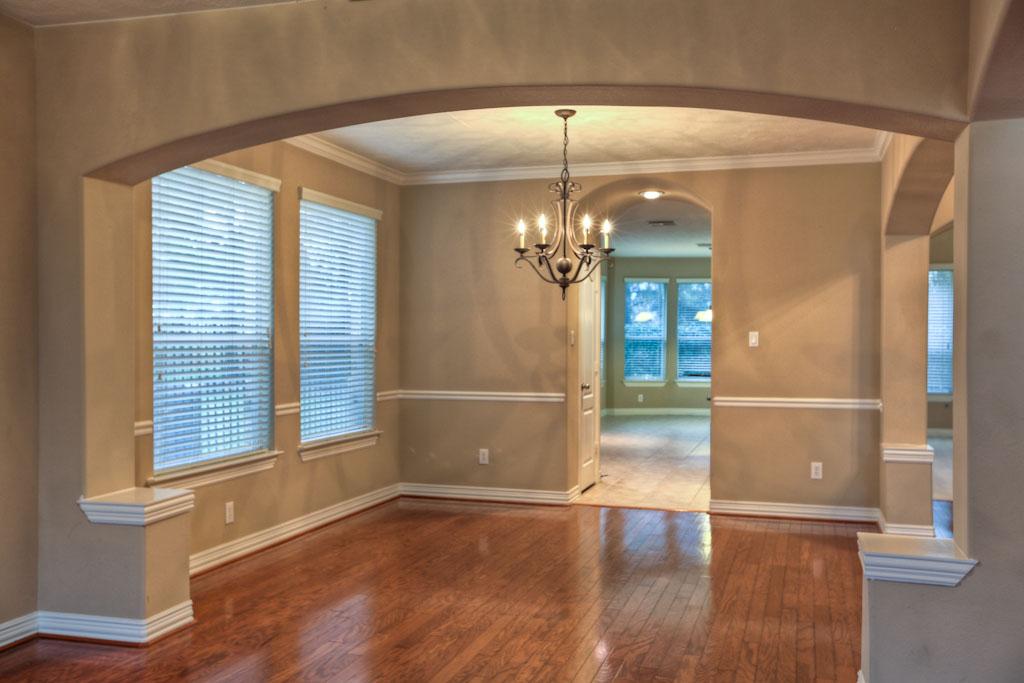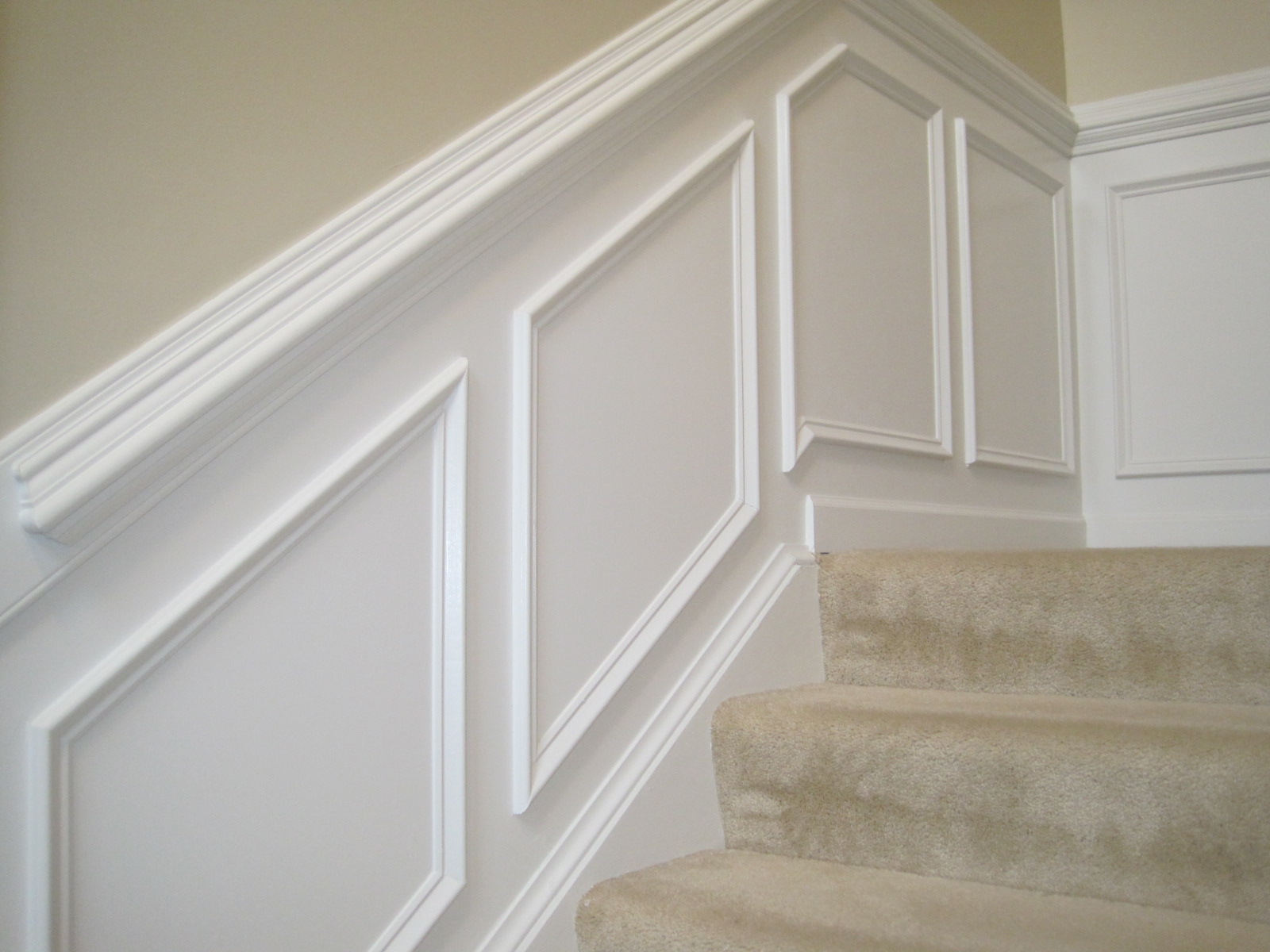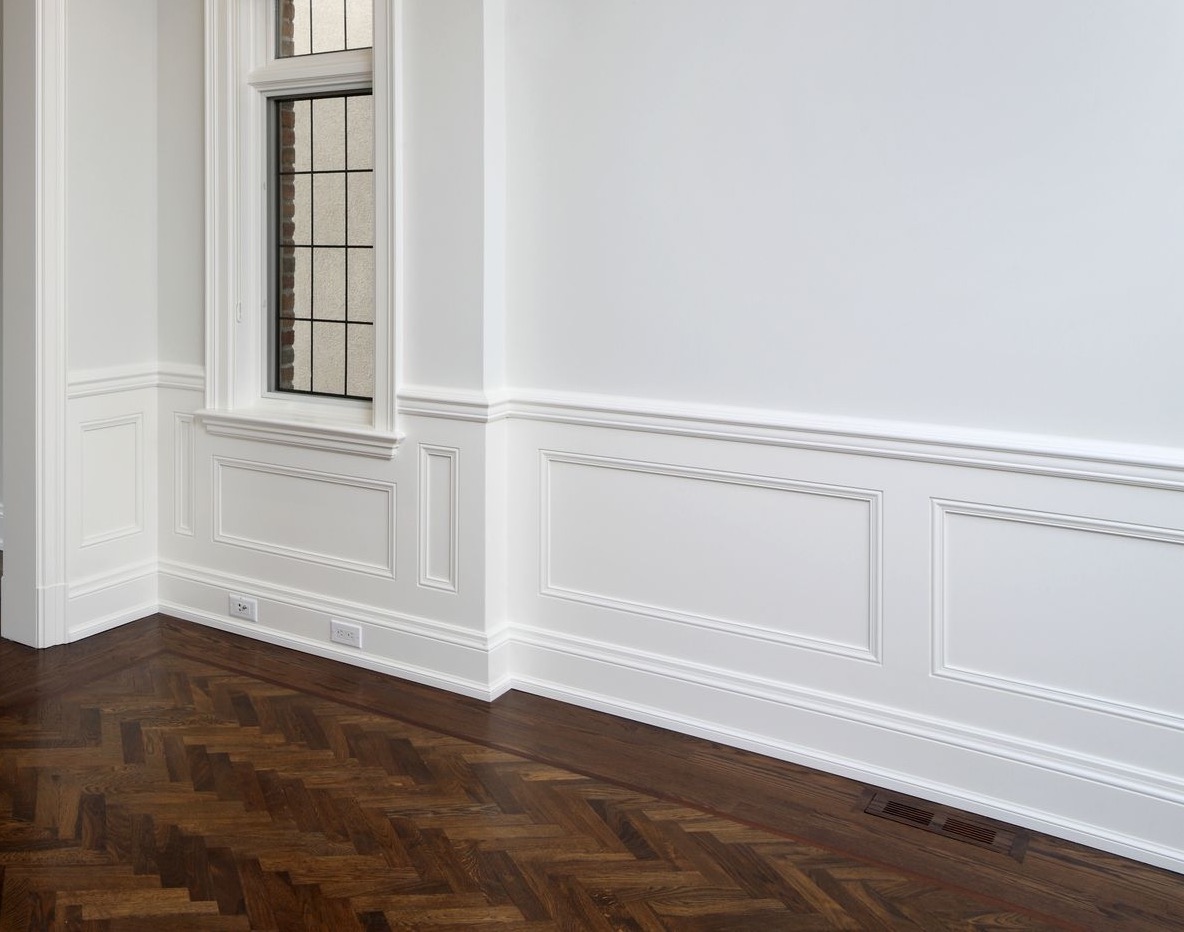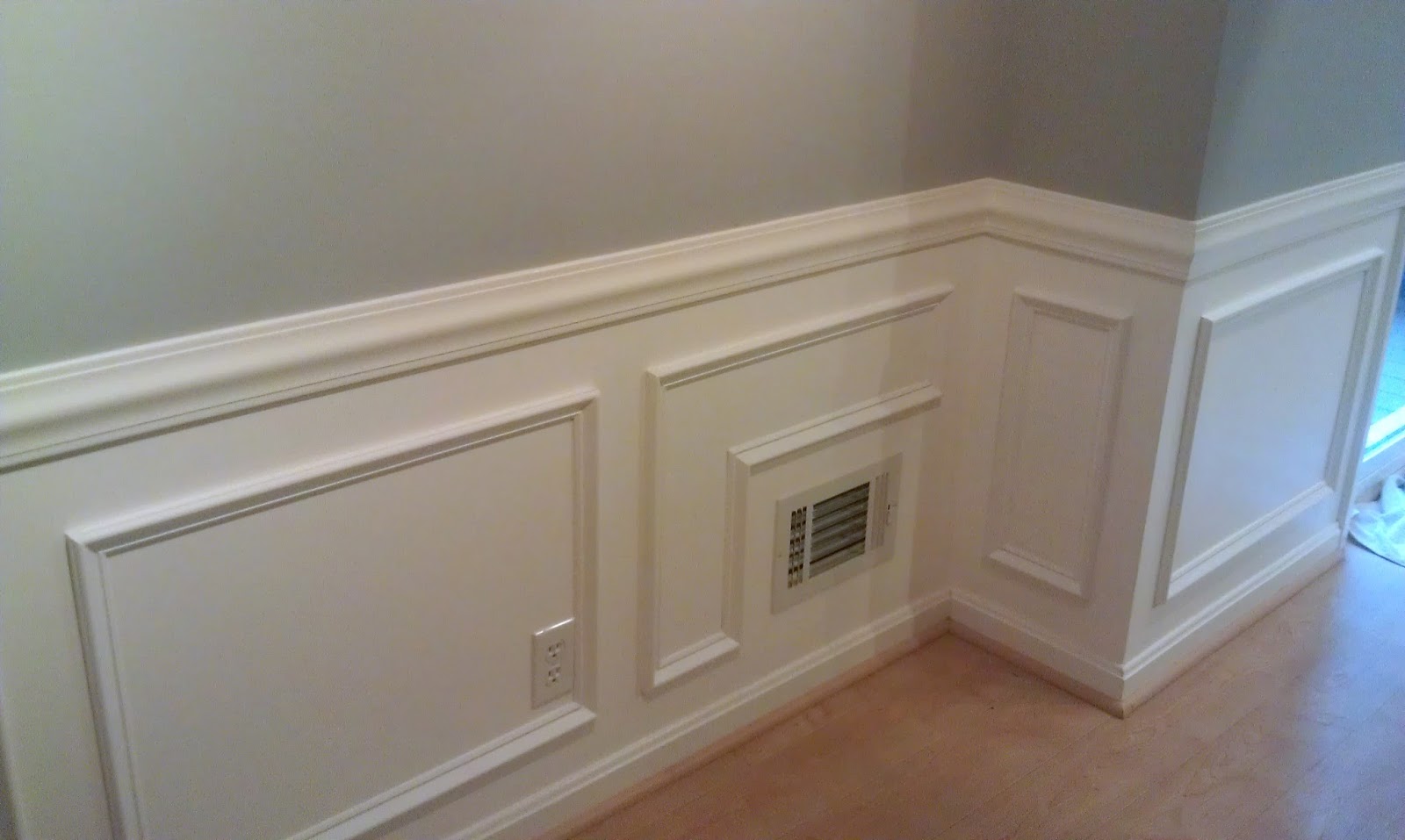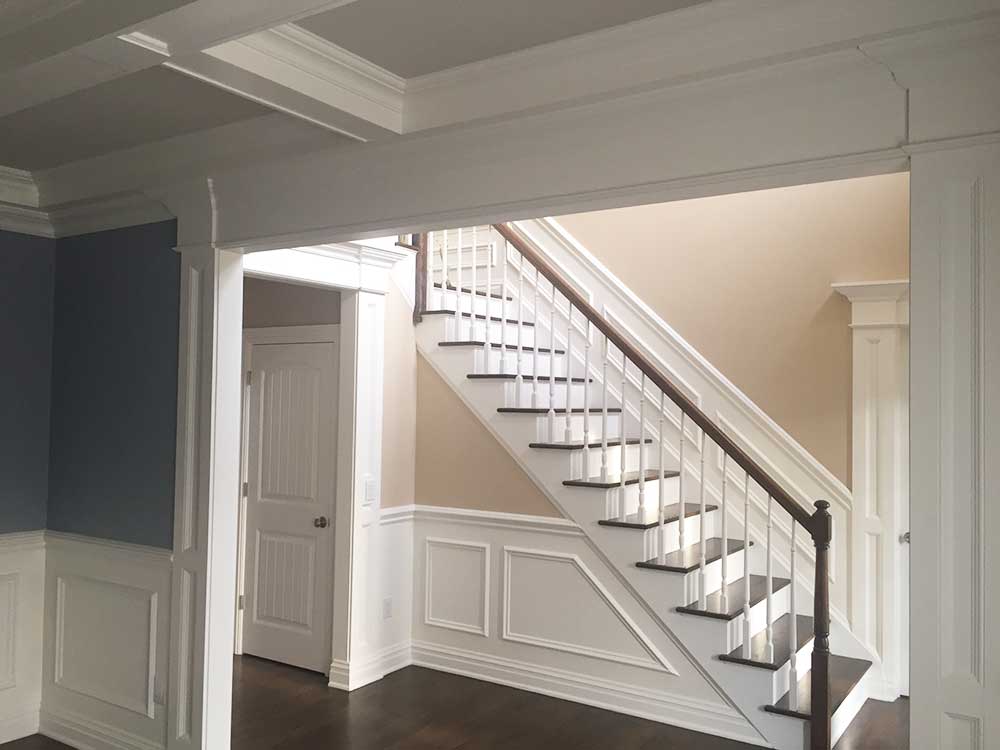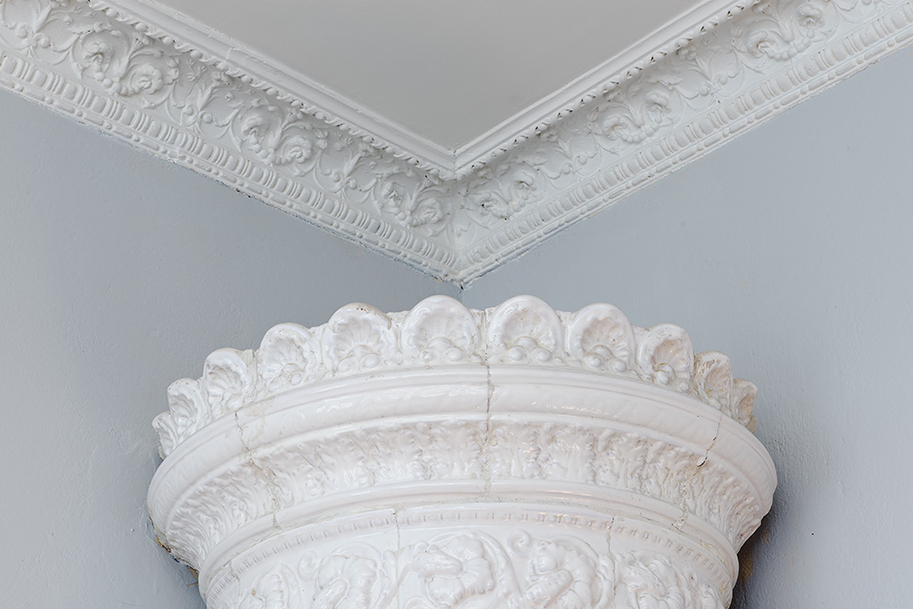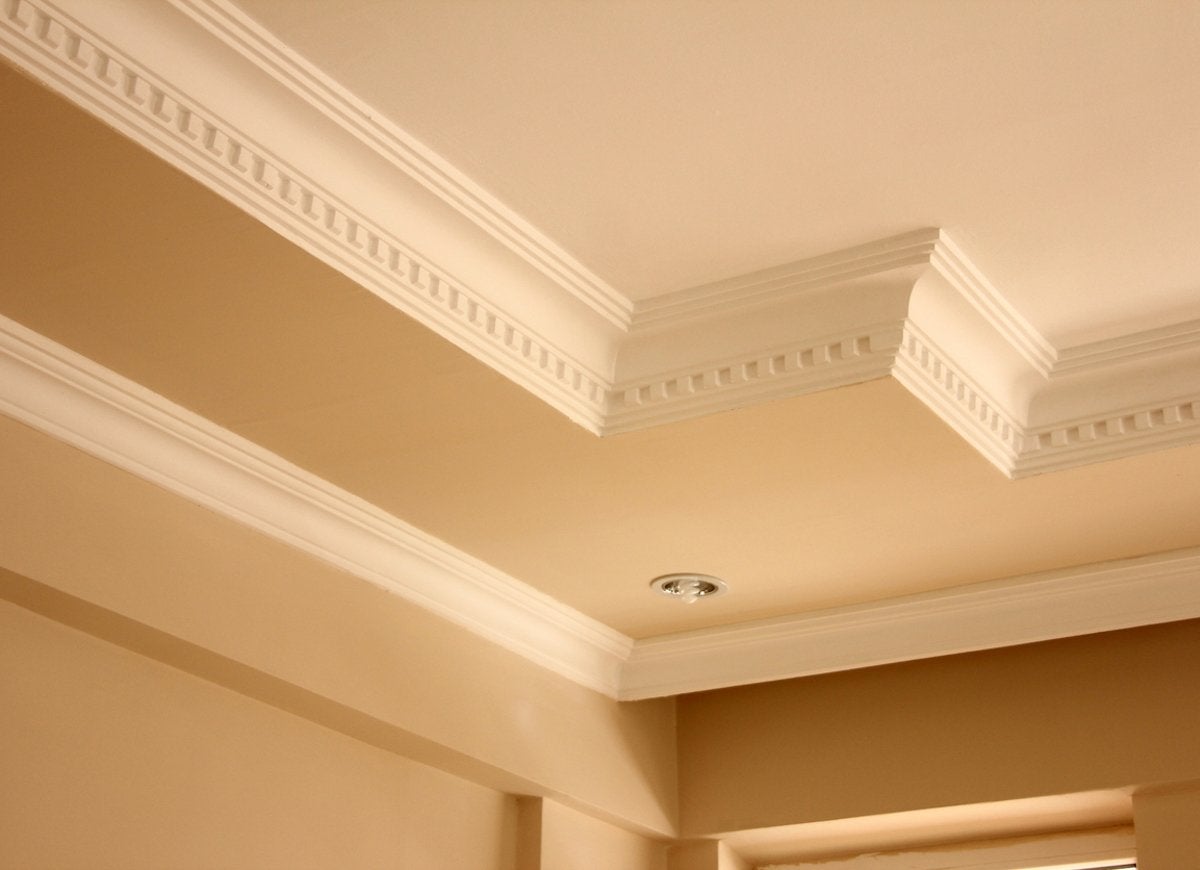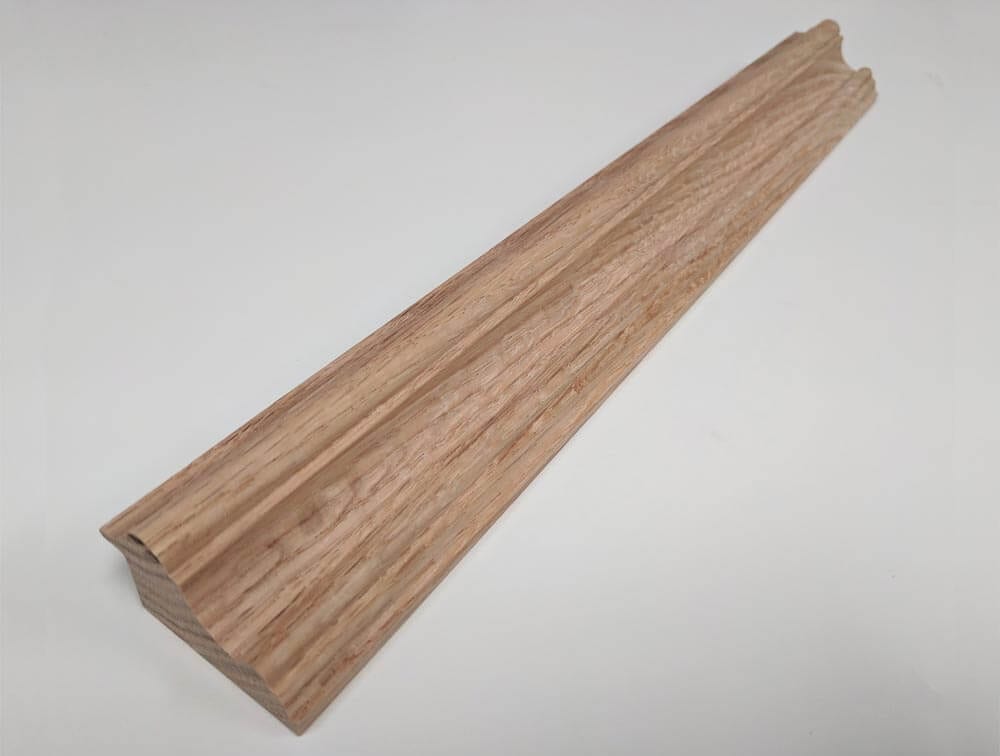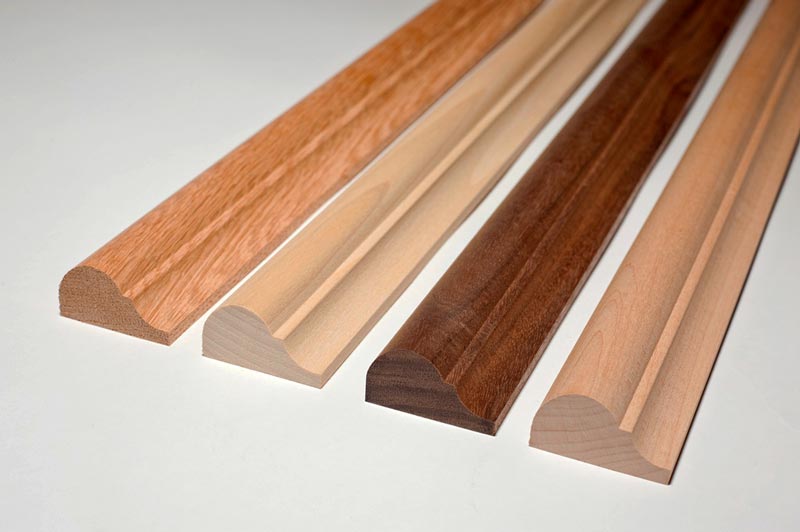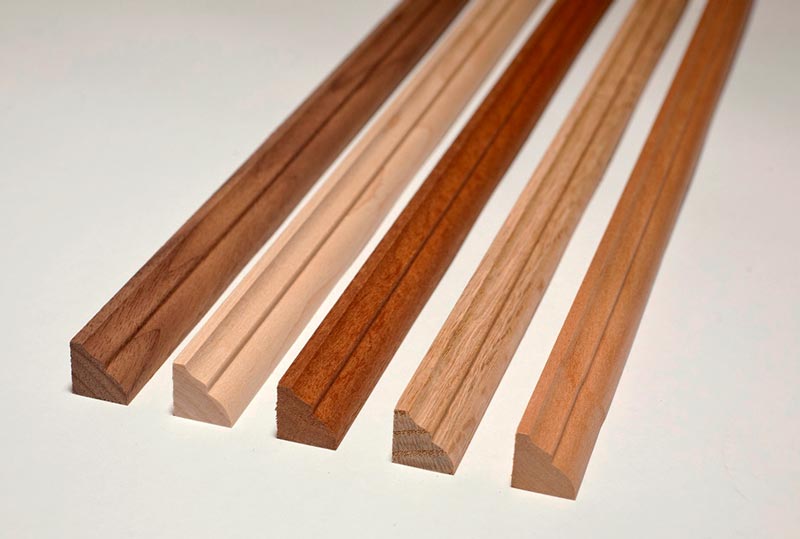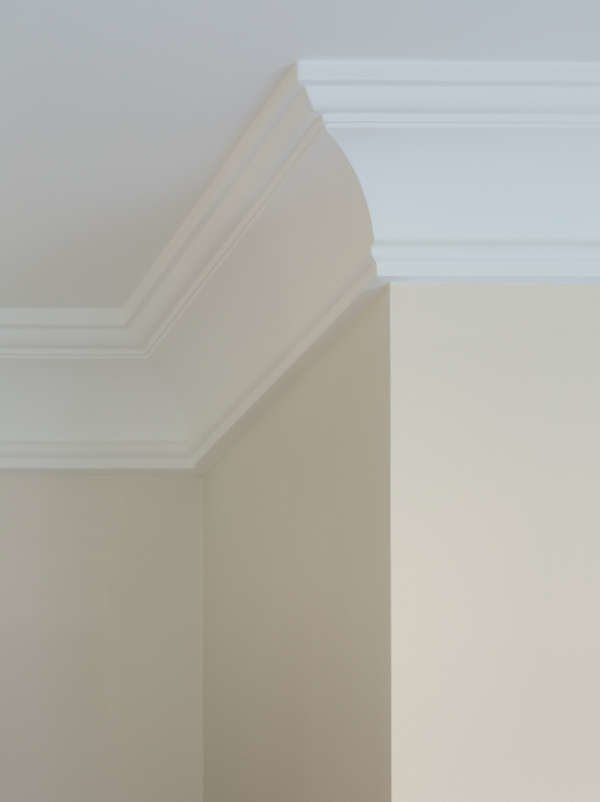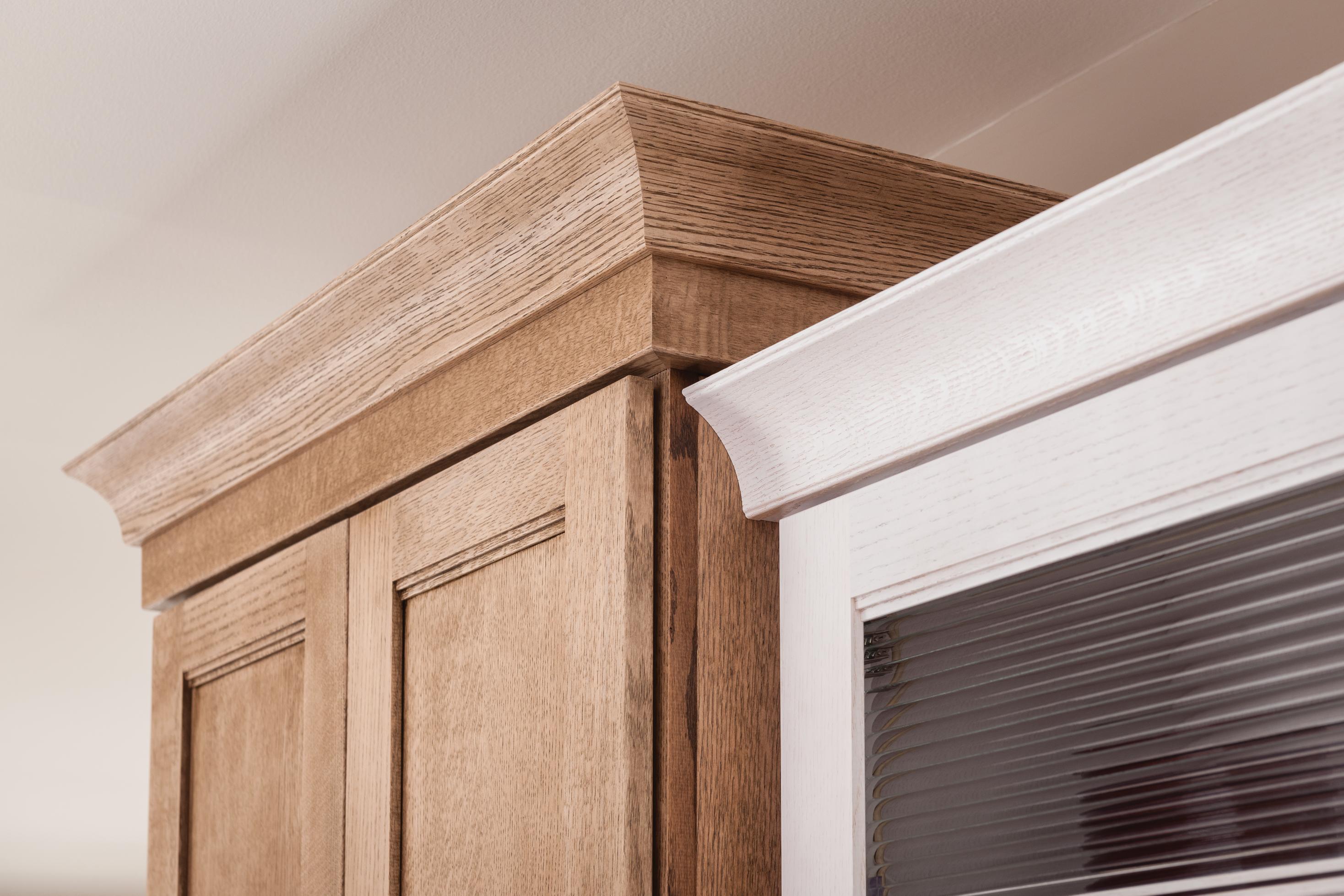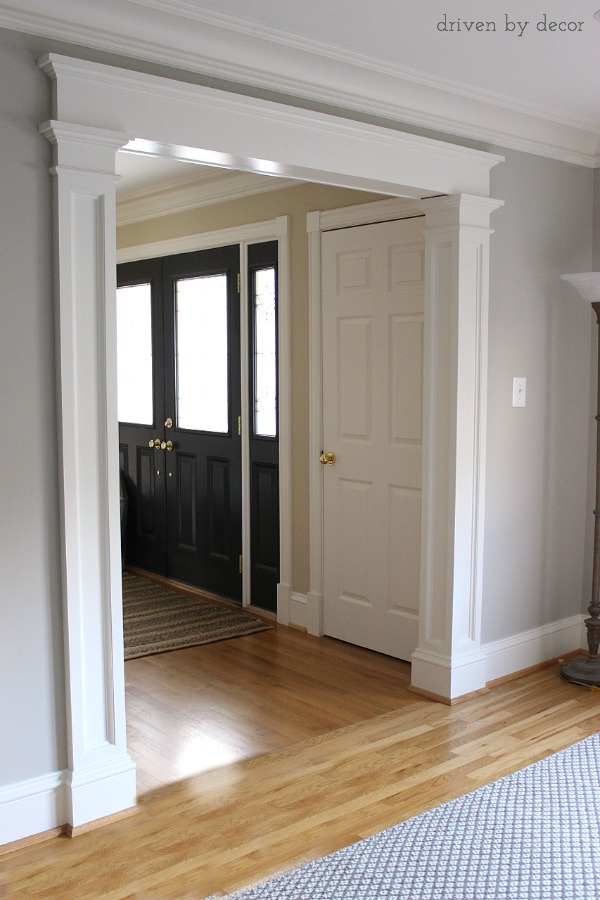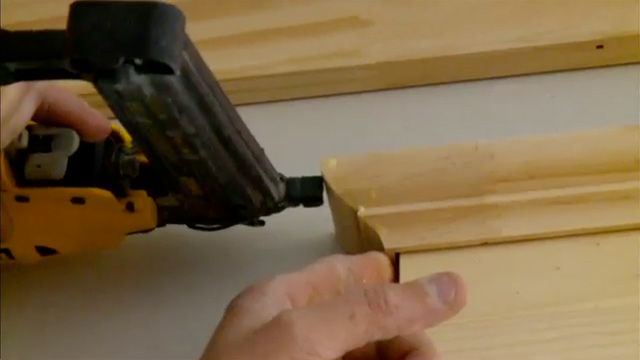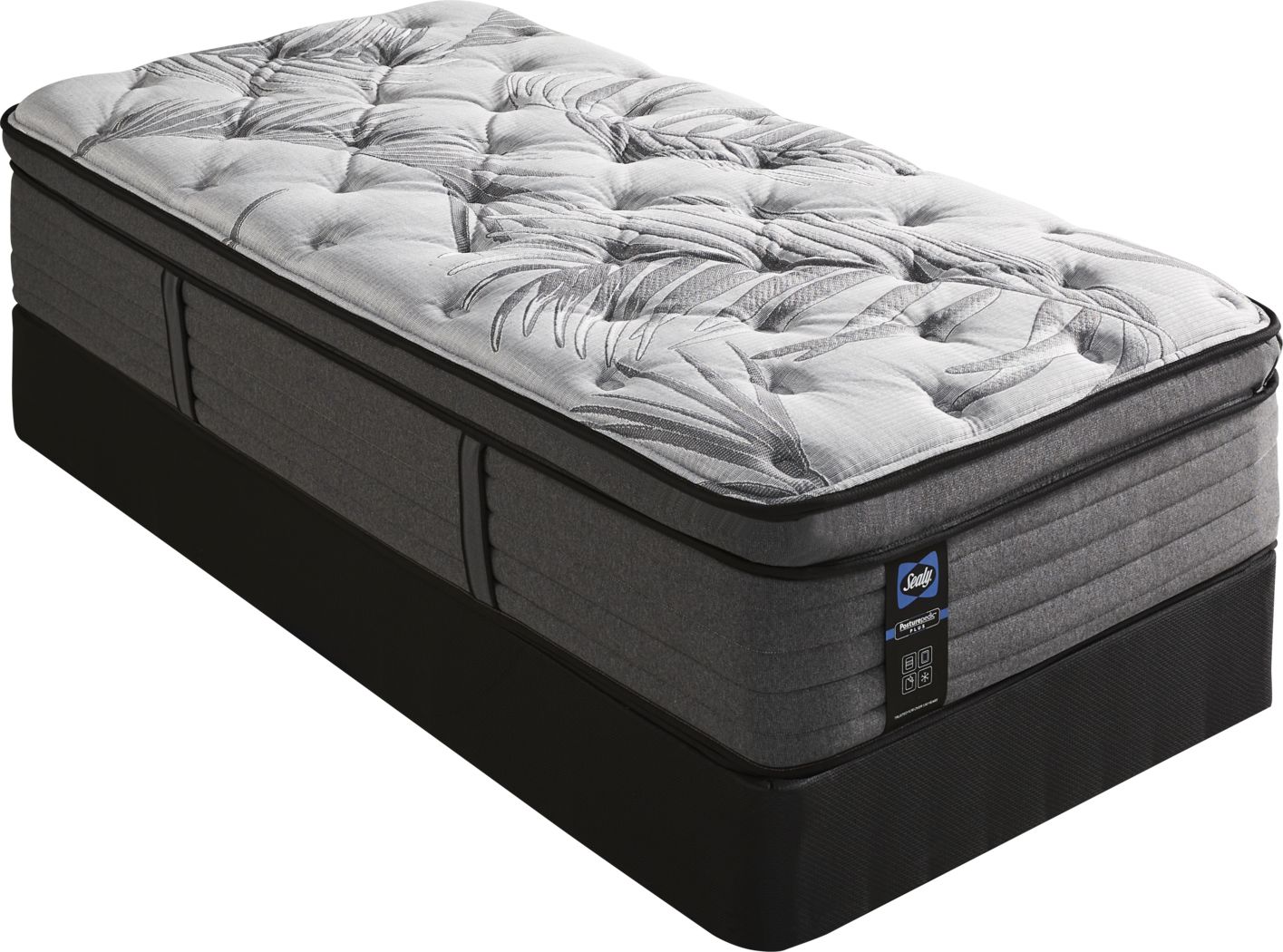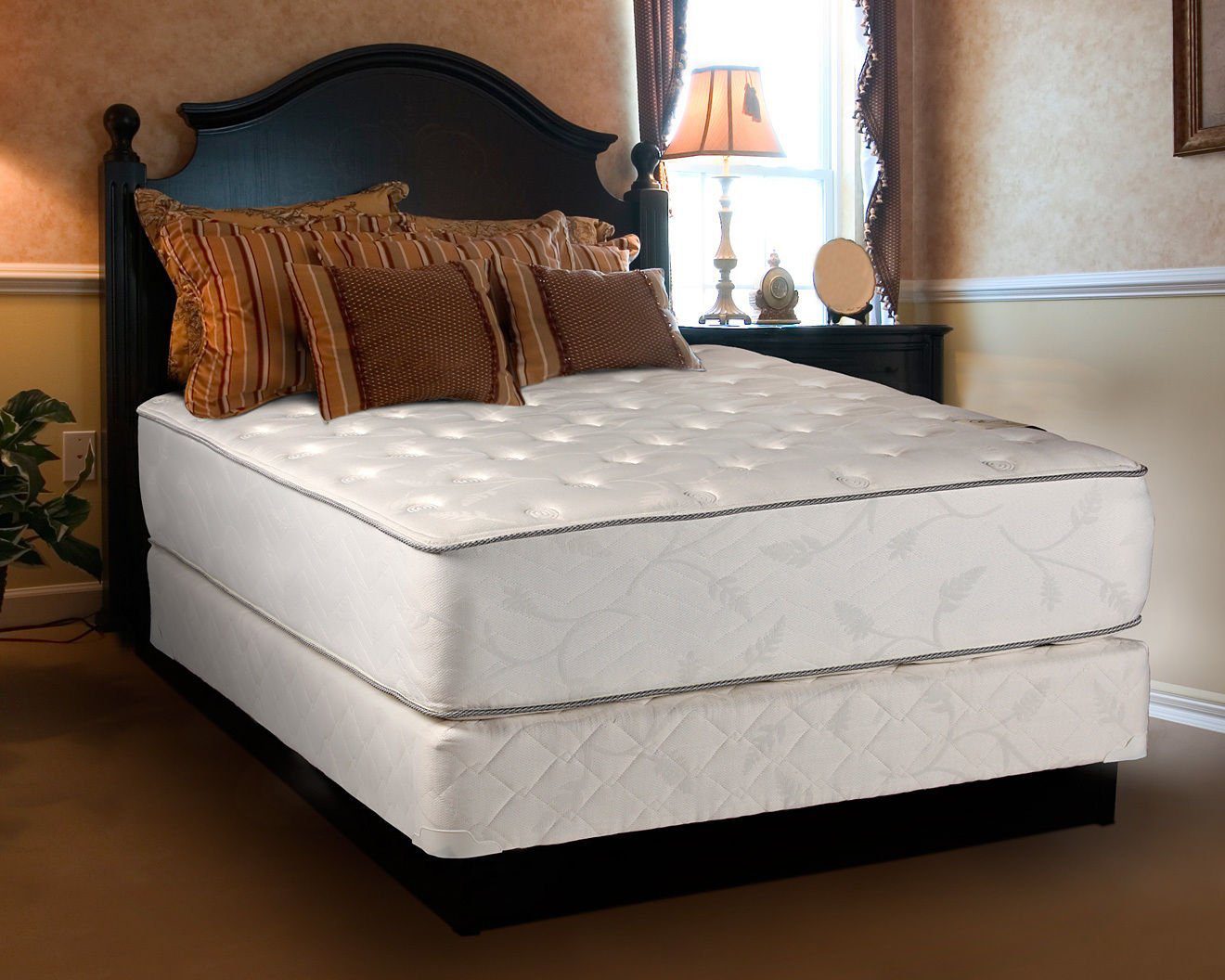Crown molding is a classic and timeless addition to any living room entrance. It is a decorative trim that is installed at the top of walls where they meet the ceiling. This type of molding adds a touch of elegance and sophistication to the space, making it feel more luxurious and upscale. It also helps to visually define the space and create a cohesive look throughout the room. When choosing crown molding for your living room entrance, consider the style of your home and the overall aesthetic you are trying to achieve. For a more traditional look, opt for a larger and more intricate molding with ornate details. If you prefer a modern and minimalistic look, a simple and streamlined crown molding will do the trick.1. Crown Molding: Adding Elegance and Sophistication
Wainscoting is a type of paneling that is installed on the lower half of walls, typically between 3 to 5 feet in height. It is a classic and timeless choice for adding texture and visual interest to your living room entrance. Wainscoting can be made from a variety of materials, such as wood, MDF, or even wallpaper, making it a versatile option for any home. For a more traditional look, opt for raised panel wainscoting with intricate details. If you want a more modern and sleek look, consider a simple and clean shiplap or beadboard wainscoting. This type of molding can also be painted in any color to match the overall color scheme of your living room entrance.2. Wainscoting: A Classic and Timeless Choice
Baseboard molding, also known as base molding or skirting board, is a type of molding that is installed at the base of walls where they meet the floor. It is a finishing touch that not only adds visual interest but also helps to protect the walls from scuffs and marks. Baseboard molding comes in a variety of styles, from simple and sleek to more ornate and decorative. When choosing baseboard molding for your living room entrance, consider the height and style of your walls. If you have tall ceilings, opt for taller and more substantial baseboard molding to create a sense of balance. For a more modern look, choose a simple and streamlined baseboard molding that complements the overall aesthetic of your living room.3. Baseboard Molding: The Finishing Touch
Chair rail molding, also known as dado rail, is a horizontal molding that is installed on walls at the height of a chair back. This type of molding not only adds dimension and character to your living room entrance but also serves a practical purpose of protecting the walls from furniture. Chair rail molding comes in a variety of styles and can be painted in any color to match your living room’s color scheme. For a more traditional look, opt for a wider and more decorative chair rail molding with intricate details. If you prefer a more modern and minimalistic look, a simple and clean chair rail molding will do the trick. You can also use chair rail molding to create a two-tone wall by painting the lower half in a different color or using wallpaper.4. Chair Rail Molding: Adding Dimension and Character
Picture frame molding, also known as wall frame molding or panel molding, is a type of molding that is installed on walls to create a series of rectangular or square frames. It adds a unique and creative touch to your living room entrance, making it look like a gallery or museum. This type of molding can be used to highlight artwork, photographs, or even a TV. Picture frame molding comes in a variety of styles and can be customized to fit your space. You can choose the size and shape of the frames, as well as the spacing between them. This type of molding can be painted in any color to match your living room’s color scheme or left in its natural wood finish for a more rustic and organic look.5. Picture Frame Molding: A Unique and Creative Touch
Decorative molding, also known as ornamental molding, is a type of molding that is used to make a statement in your living room entrance. It comes in a variety of styles and designs, from intricate and elaborate to more modern and abstract. This type of molding can be used to add drama and visual interest to your space. You can use decorative molding to create a focal point in your living room entrance, such as above a fireplace or around a grand entranceway. It can also be used to frame a large piece of artwork or a statement piece of furniture. The possibilities are endless when it comes to decorative molding, so let your creativity run wild.6. Decorative Molding: Making a Statement
Panel molding, also known as paneling or wall paneling, is a type of molding that is installed on walls to create a series of raised or recessed panels. It adds texture and depth to your living room entrance, making it look more sophisticated and upscale. Panel molding can be made from a variety of materials, such as wood, MDF, or even wallpaper. You can use panel molding to create a feature wall in your living room entrance, or you can install it on all the walls for a more cohesive look. This type of molding can be painted in any color to match your living room’s color scheme or left in its natural wood finish for a more rustic and organic look.7. Panel Molding: Adding Texture and Depth
Cove molding, also known as coving or crown molding, is a type of molding that is installed at the junction of the wall and ceiling. It is a curved molding that softens the edges and adds a touch of elegance to your living room entrance. This type of molding is typically used in more traditional and formal spaces. When choosing cove molding for your living room entrance, consider the size and shape of your space. If you have a smaller living room, opt for a smaller and more subtle cove molding to avoid overwhelming the space. For larger living rooms, a larger and more elaborate cove molding can add drama and visual interest.8. Cove Molding: Softening the Edges
Archway molding, also known as arch molding or architrave, is a type of molding that is used to frame arches or curved openings in your living room entrance. It adds a touch of sophistication and grandeur to your space, making it feel more upscale and luxurious. Archway molding can be made from a variety of materials, such as wood, MDF, or even plaster. You can use archway molding to create a grand entrance to your living room, or you can use it to frame doorways or windows. This type of molding can be painted in any color to match your living room’s color scheme or left in its natural finish for a more dramatic and eye-catching look.9. Archway Molding: Creating a Grand Entrance
Doorway molding, also known as door trim or door casing, is a type of molding that is installed around doorways. It enhances the entryway of your living room and adds a finishing touch to your space. Doorway molding comes in a variety of styles and can be made from a variety of materials, such as wood, MDF, or even metal. When choosing doorway molding for your living room entrance, consider the style of your doors and the overall aesthetic you are trying to achieve. For a more traditional look, opt for a more detailed and ornate doorway molding. If you prefer a more modern and minimalistic look, a simple and streamlined doorway molding will do the trick.10. Doorway Molding: Enhancing the Entryway
Molding Ideas for a Stunning Living Room Entrance

Creating a Memorable First Impression
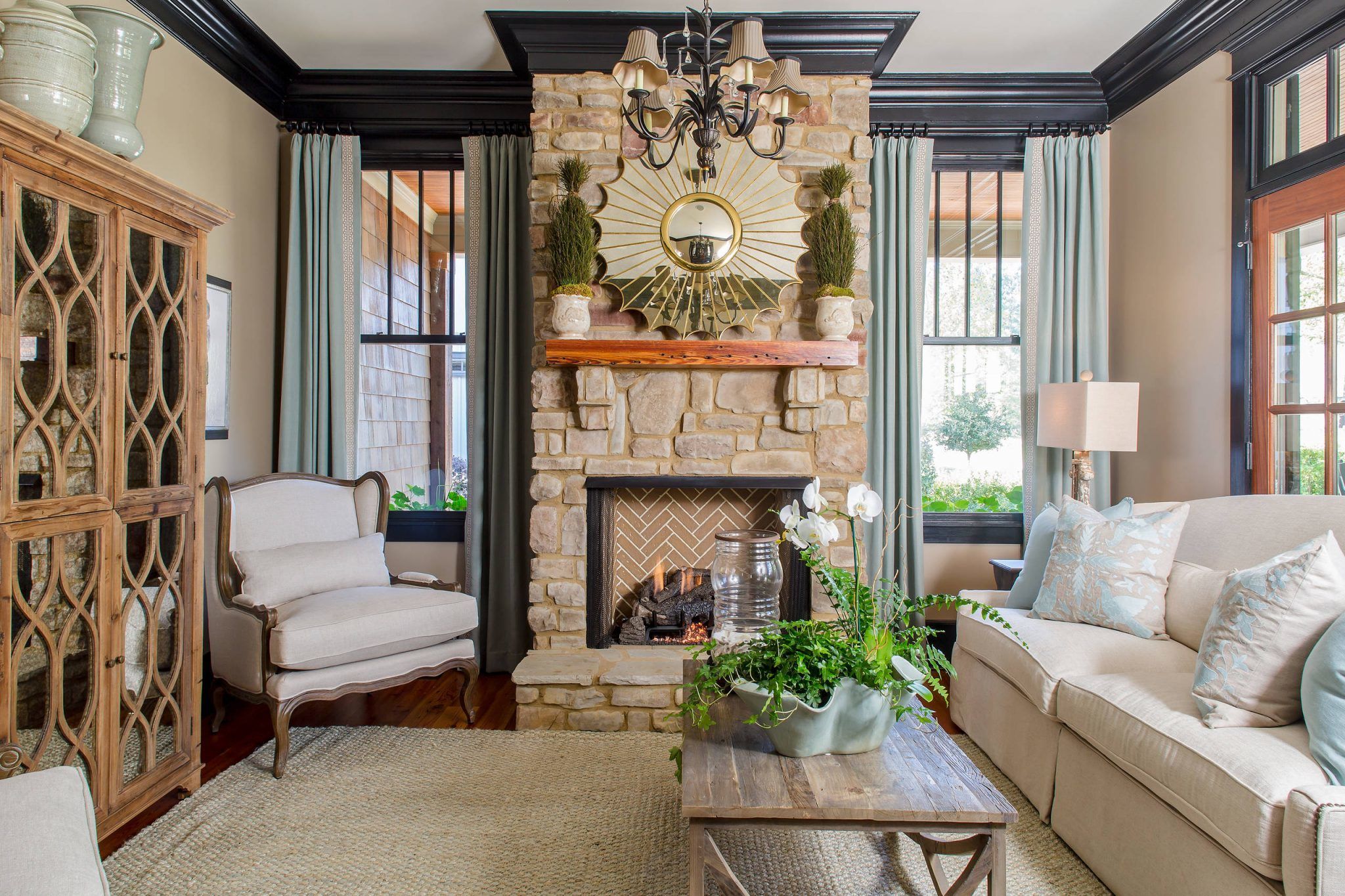 When it comes to designing your home, the entrance to your living room is a crucial element that sets the tone for the entire space. It is the first thing that guests see when they enter your home, and it is where you welcome them into your personal sanctuary. Therefore, it is important to make a great first impression with a stunning living room entrance that reflects your style and personality.
The Importance of a Well-Designed Living Room Entrance
Your living room entrance is more than just a doorway, it is a transition space that connects the outside world to your inner sanctuary. It is also the first glimpse into the overall design and aesthetic of your home. A well-designed entrance creates a sense of anticipation and excitement for what lies beyond, while a cluttered or uninviting entrance can leave a negative impression on your guests.
Key Elements to Consider
When molding ideas for your living room entrance, there are several key elements to consider. First, think about the layout of your entrance. Is it a wide and open space or a narrow hallway? This will determine the type of molding and decor that will work best. Next, consider the overall style of your home and try to incorporate elements that complement it. For example, if you have a modern home, opt for sleek and minimalistic molding, while a traditional home can benefit from more ornate and detailed designs.
Creating a Focal Point
One way to make a statement with your living room entrance is by creating a focal point. This can be achieved through the use of a bold color on the door or a unique piece of artwork or furniture. You can also add interest by incorporating different textures, such as a textured wall or a statement rug. This will add depth and visual appeal to your entrance.
Lighting is Key
Lighting plays a crucial role in setting the mood and ambiance of any space, including your living room entrance. Consider using a combination of overhead lighting and accent lighting to create a warm and inviting atmosphere. You can also use lighting to highlight specific elements, such as a piece of artwork or a decorative molding.
Final Touches
To tie everything together, don't forget to add some final touches to your living room entrance. This can include adding a welcoming doormat, incorporating plants or flowers for a pop of color, or adding a personal touch with family photos or a statement piece of decor. These small details can make a big impact and make your entrance feel more inviting and personal.
In conclusion, the entrance to your living room is an important aspect of your home design that should not be overlooked. By incorporating these molding ideas and considering key elements such as layout, style, focal points, lighting, and final touches, you can create a stunning and memorable entrance that reflects your personal style and sets the tone for the rest of your home. So go ahead and get creative with your living room entrance and make it a true reflection of your unique personality and taste.
When it comes to designing your home, the entrance to your living room is a crucial element that sets the tone for the entire space. It is the first thing that guests see when they enter your home, and it is where you welcome them into your personal sanctuary. Therefore, it is important to make a great first impression with a stunning living room entrance that reflects your style and personality.
The Importance of a Well-Designed Living Room Entrance
Your living room entrance is more than just a doorway, it is a transition space that connects the outside world to your inner sanctuary. It is also the first glimpse into the overall design and aesthetic of your home. A well-designed entrance creates a sense of anticipation and excitement for what lies beyond, while a cluttered or uninviting entrance can leave a negative impression on your guests.
Key Elements to Consider
When molding ideas for your living room entrance, there are several key elements to consider. First, think about the layout of your entrance. Is it a wide and open space or a narrow hallway? This will determine the type of molding and decor that will work best. Next, consider the overall style of your home and try to incorporate elements that complement it. For example, if you have a modern home, opt for sleek and minimalistic molding, while a traditional home can benefit from more ornate and detailed designs.
Creating a Focal Point
One way to make a statement with your living room entrance is by creating a focal point. This can be achieved through the use of a bold color on the door or a unique piece of artwork or furniture. You can also add interest by incorporating different textures, such as a textured wall or a statement rug. This will add depth and visual appeal to your entrance.
Lighting is Key
Lighting plays a crucial role in setting the mood and ambiance of any space, including your living room entrance. Consider using a combination of overhead lighting and accent lighting to create a warm and inviting atmosphere. You can also use lighting to highlight specific elements, such as a piece of artwork or a decorative molding.
Final Touches
To tie everything together, don't forget to add some final touches to your living room entrance. This can include adding a welcoming doormat, incorporating plants or flowers for a pop of color, or adding a personal touch with family photos or a statement piece of decor. These small details can make a big impact and make your entrance feel more inviting and personal.
In conclusion, the entrance to your living room is an important aspect of your home design that should not be overlooked. By incorporating these molding ideas and considering key elements such as layout, style, focal points, lighting, and final touches, you can create a stunning and memorable entrance that reflects your personal style and sets the tone for the rest of your home. So go ahead and get creative with your living room entrance and make it a true reflection of your unique personality and taste.

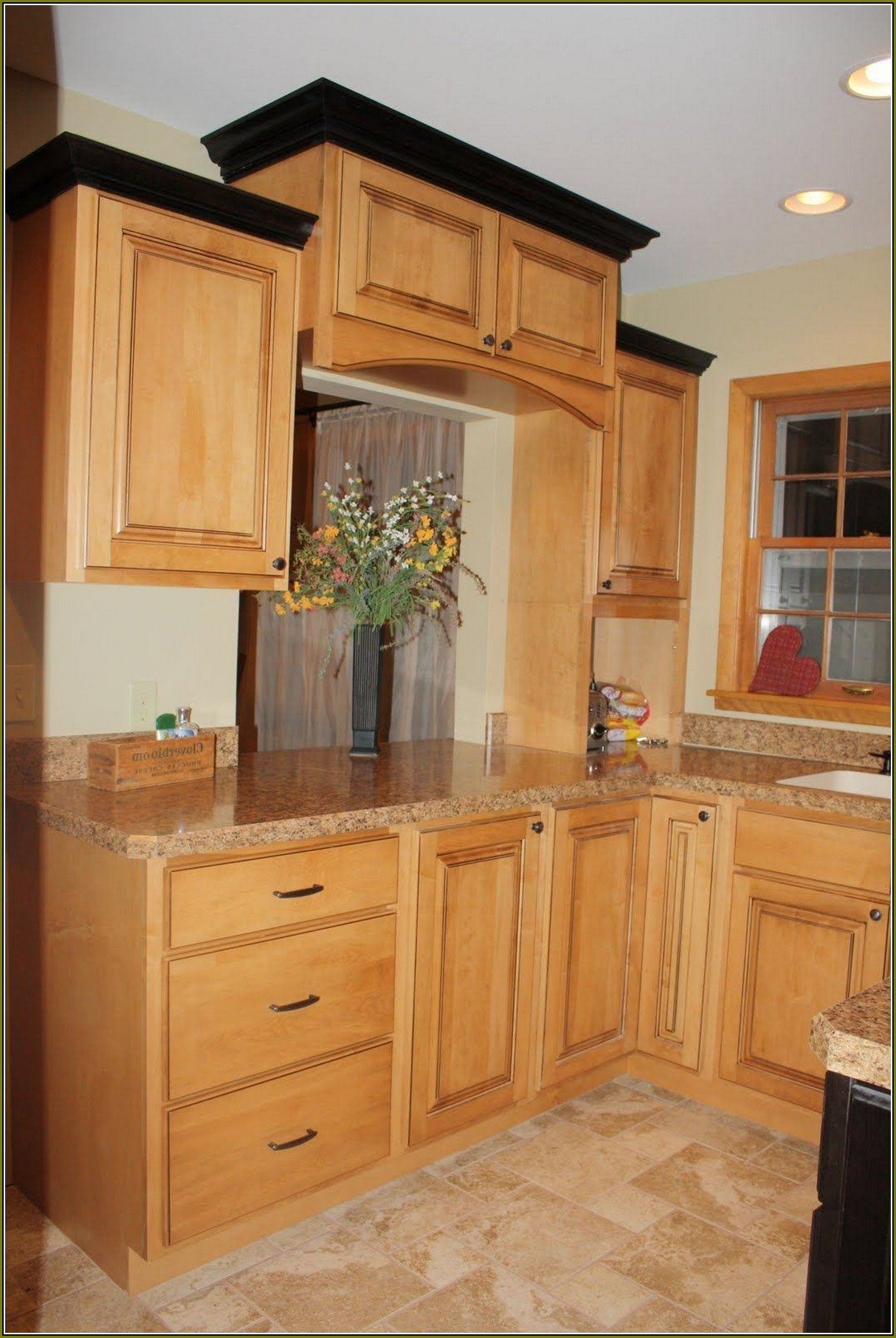

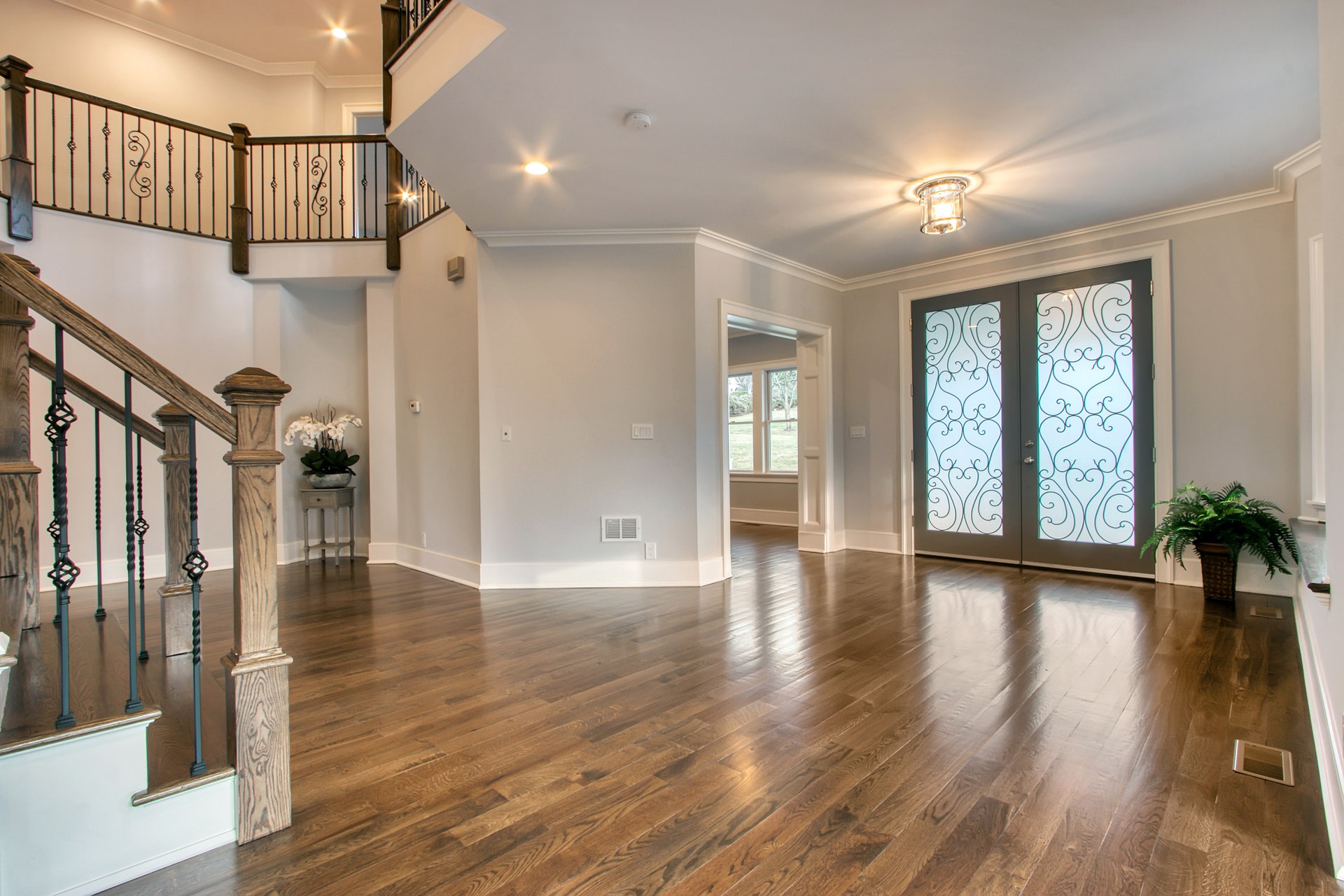
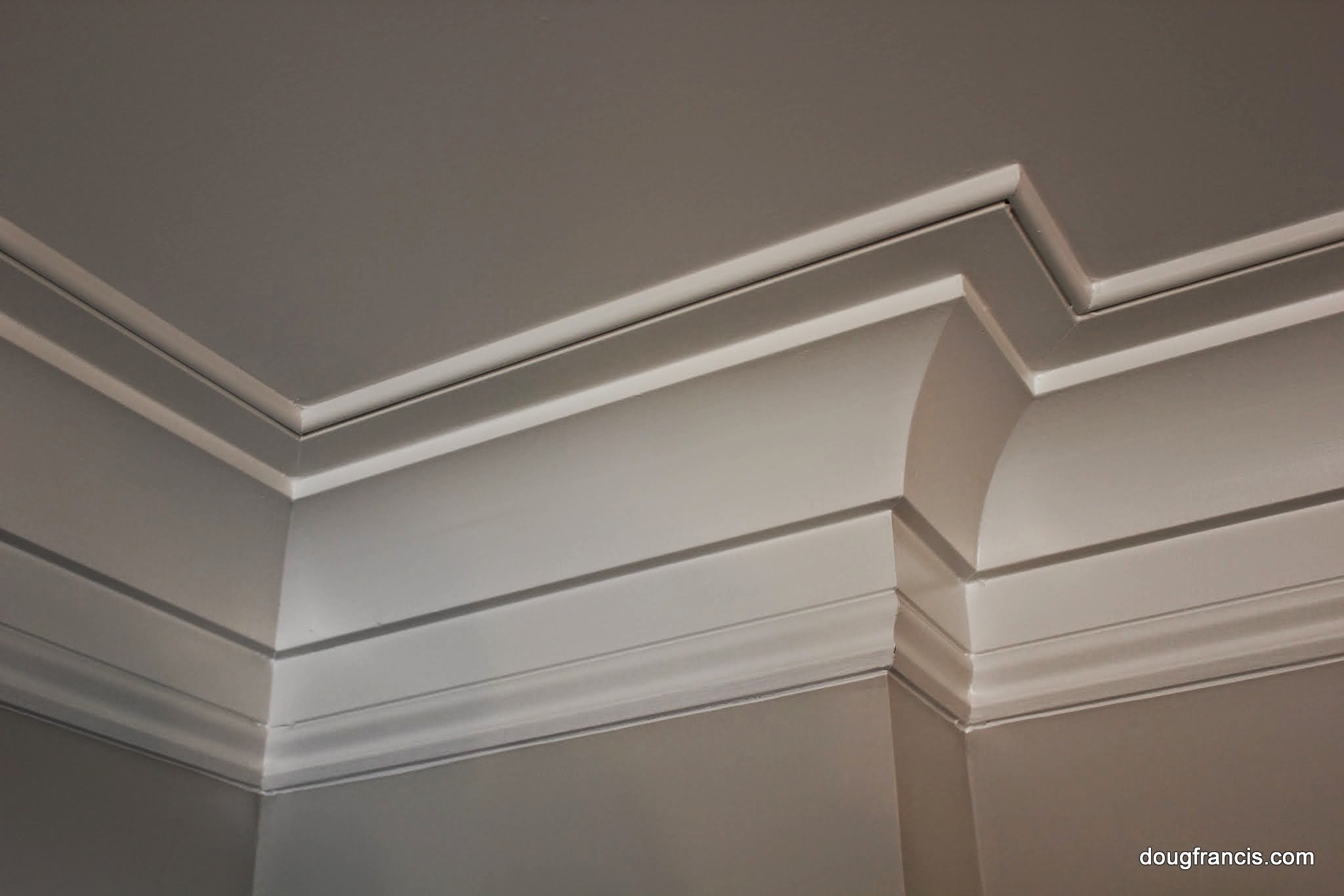
/Diningroomwithcrownmolding-GettyImages-145121522-85951b058d5f406cb48bd96375265b2e.jpg)
